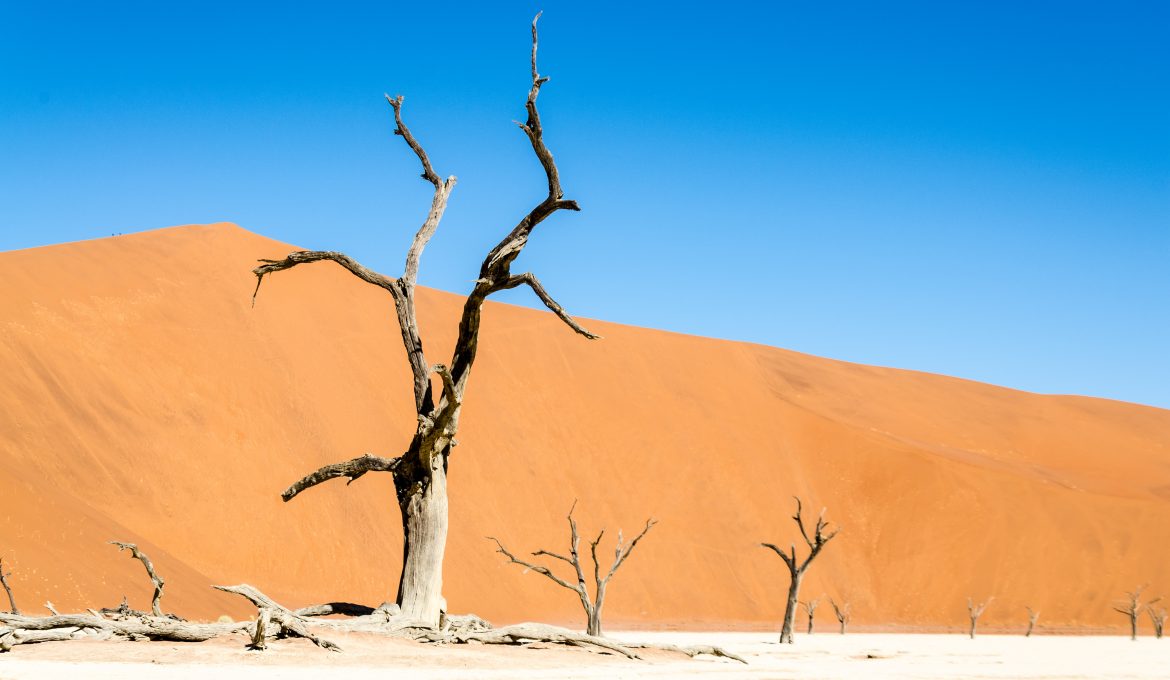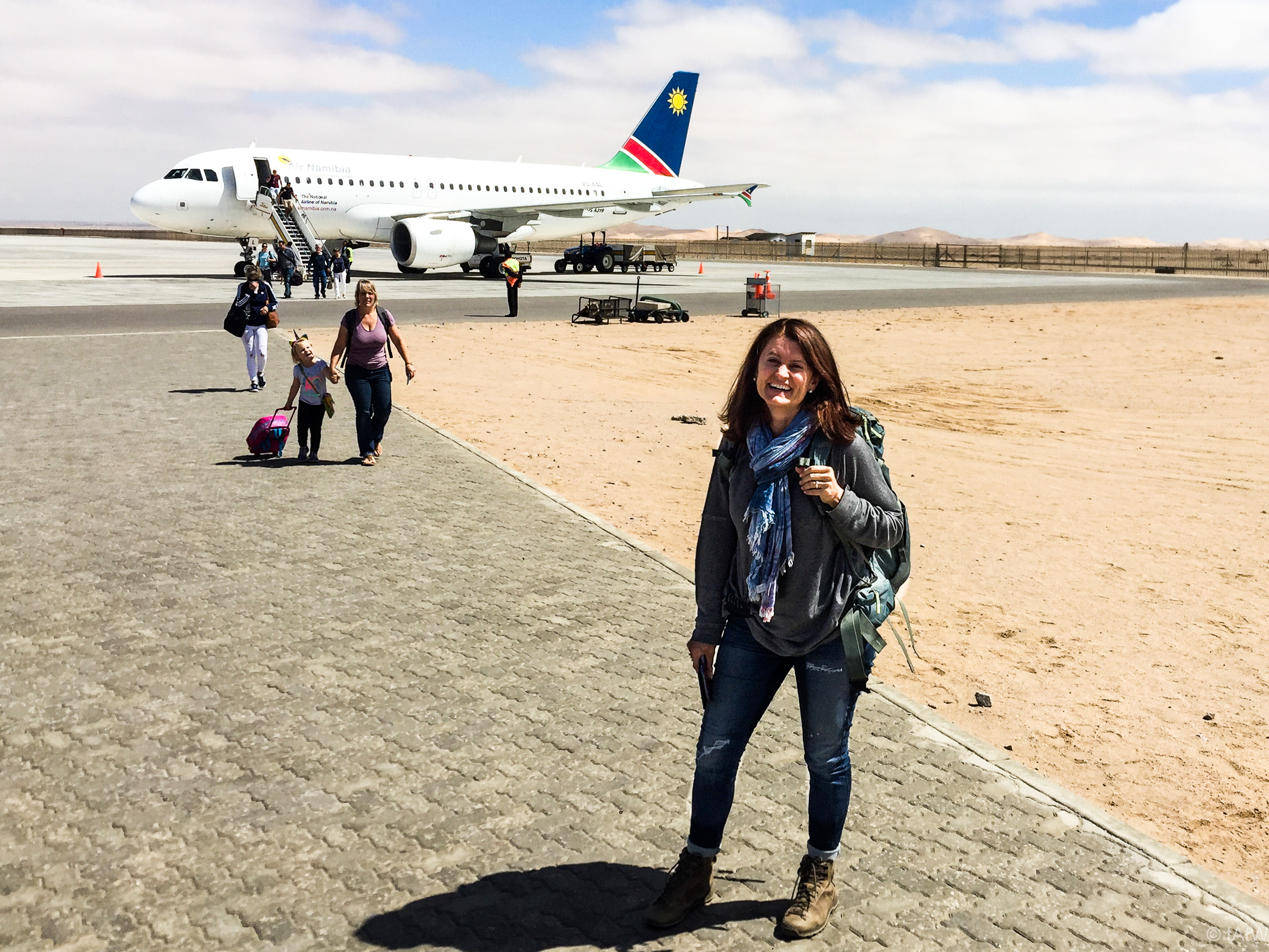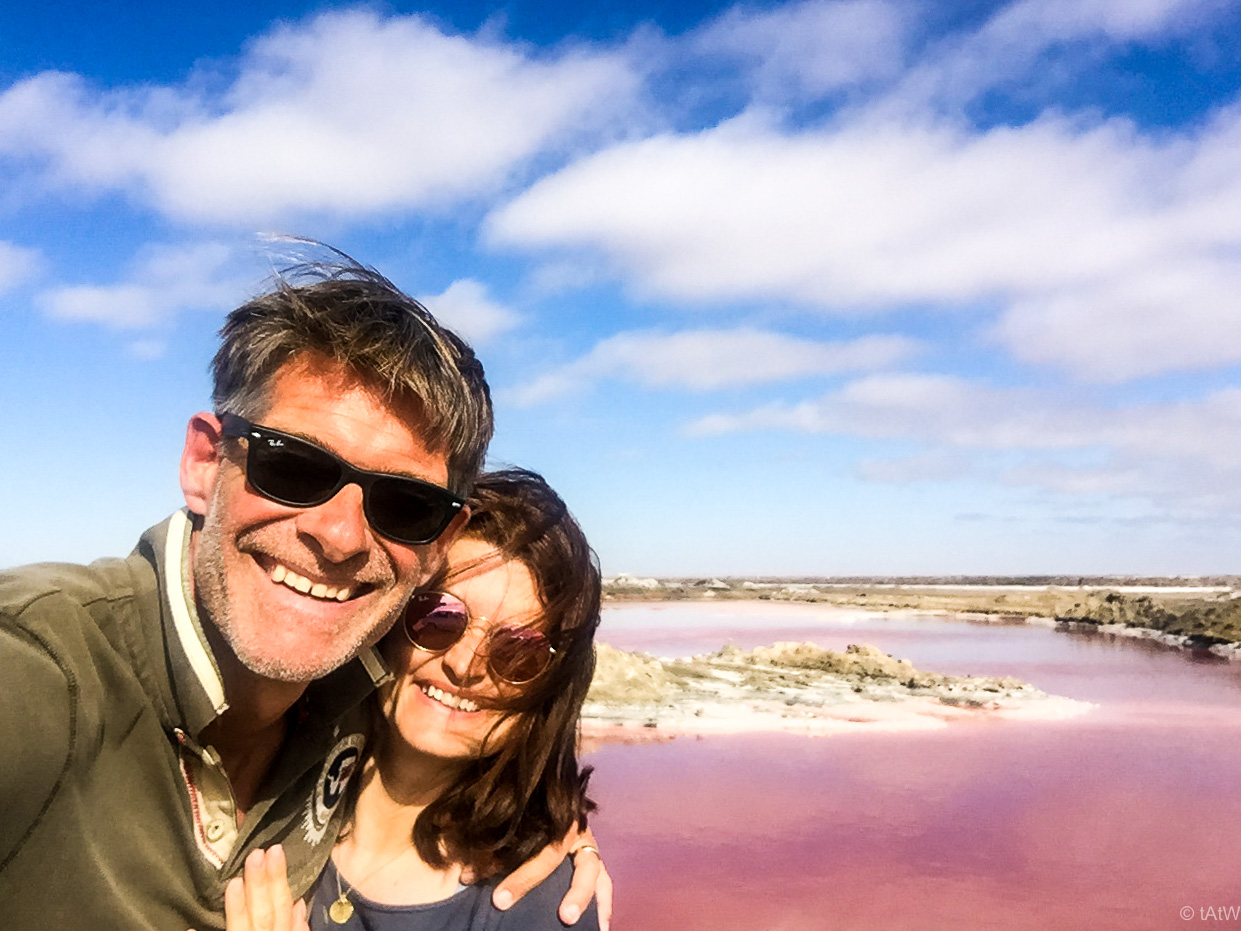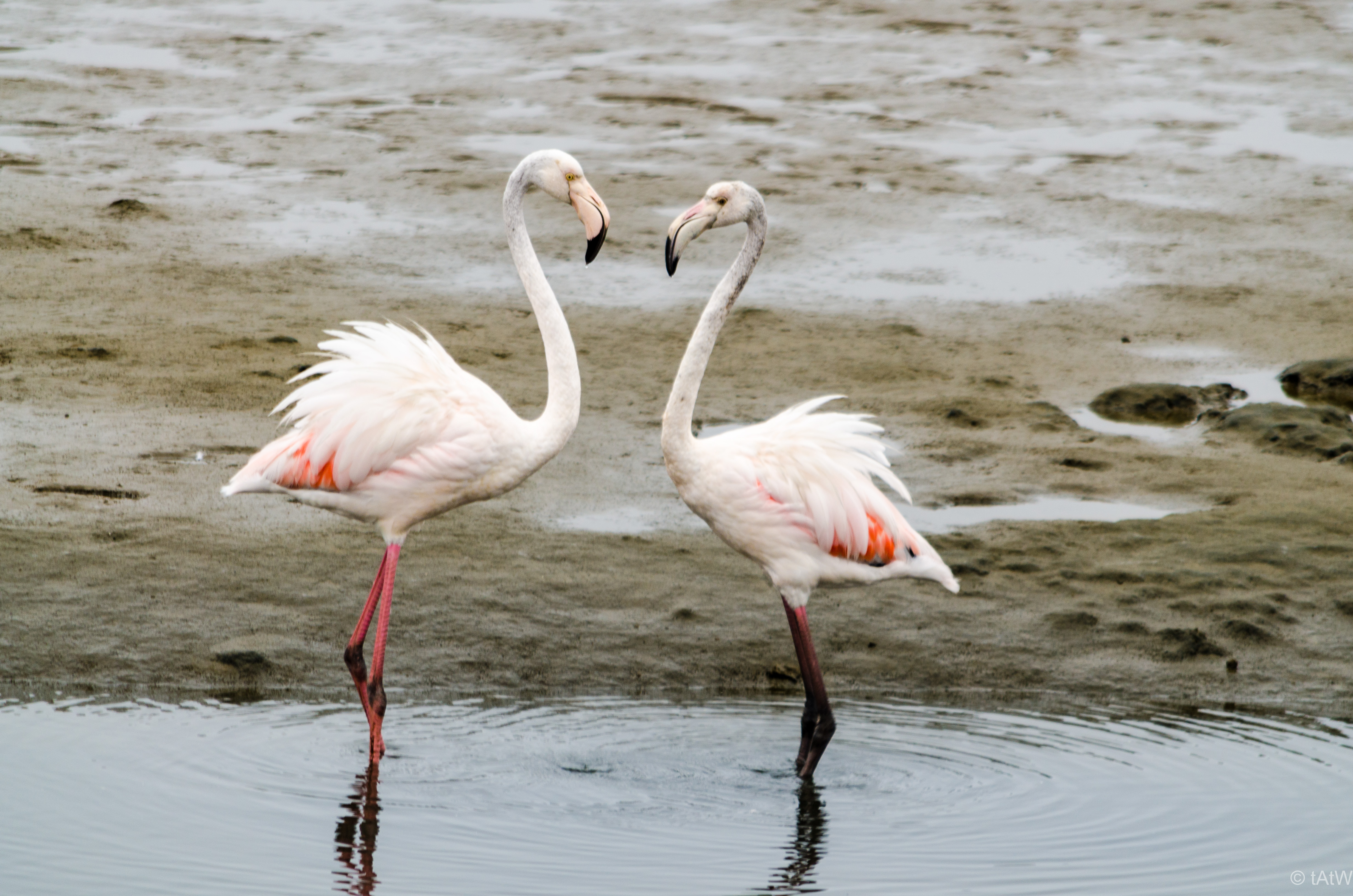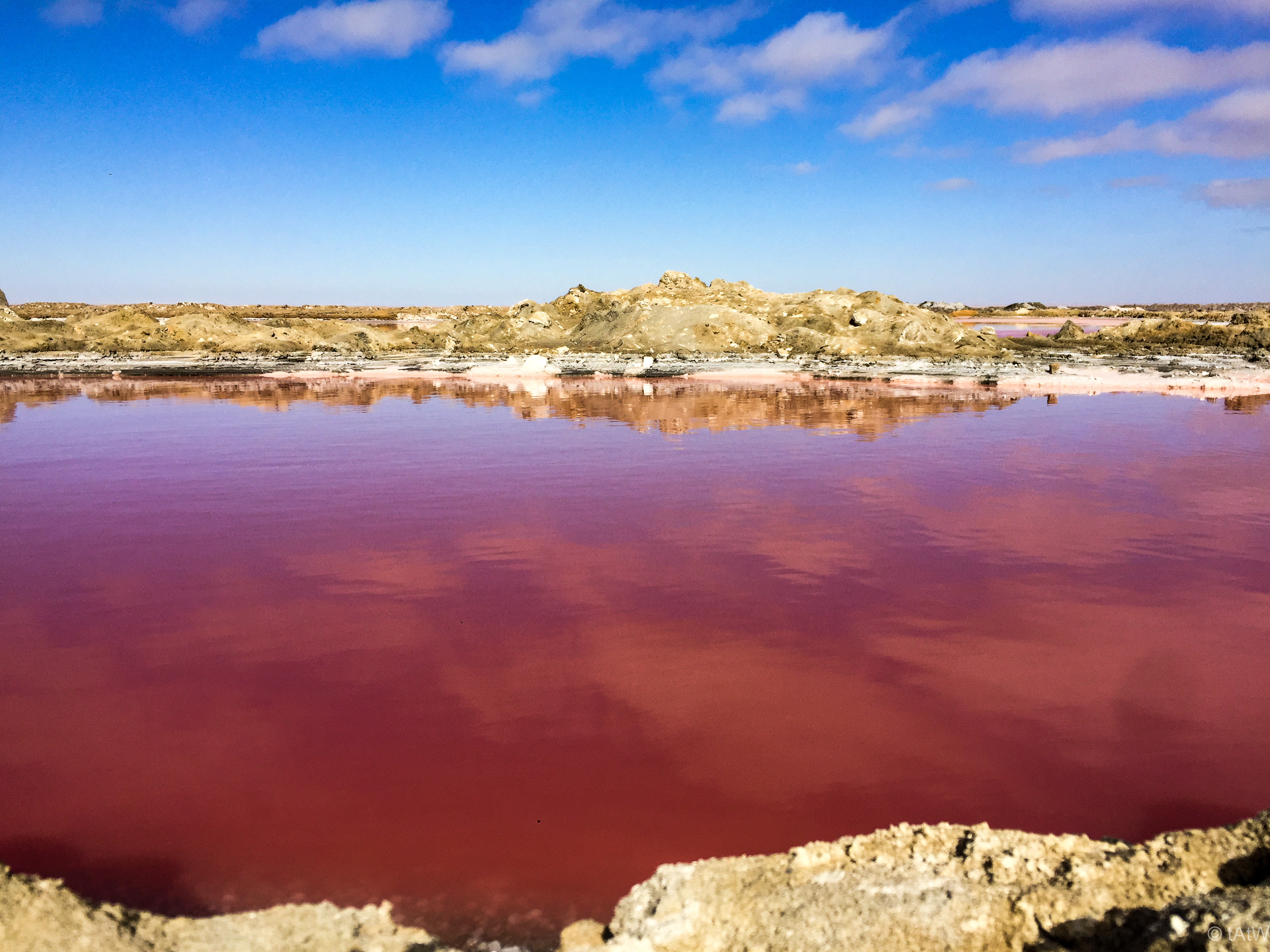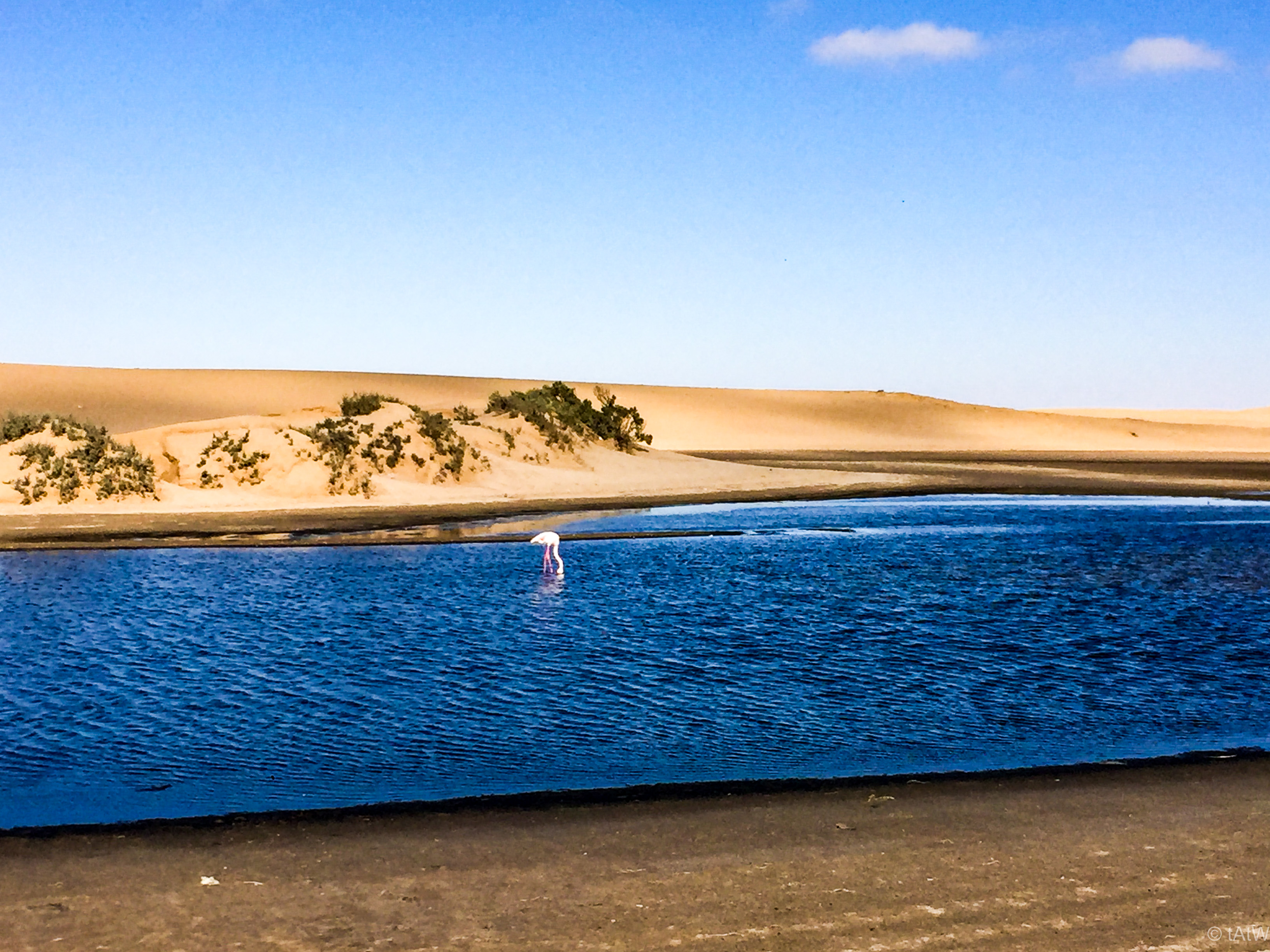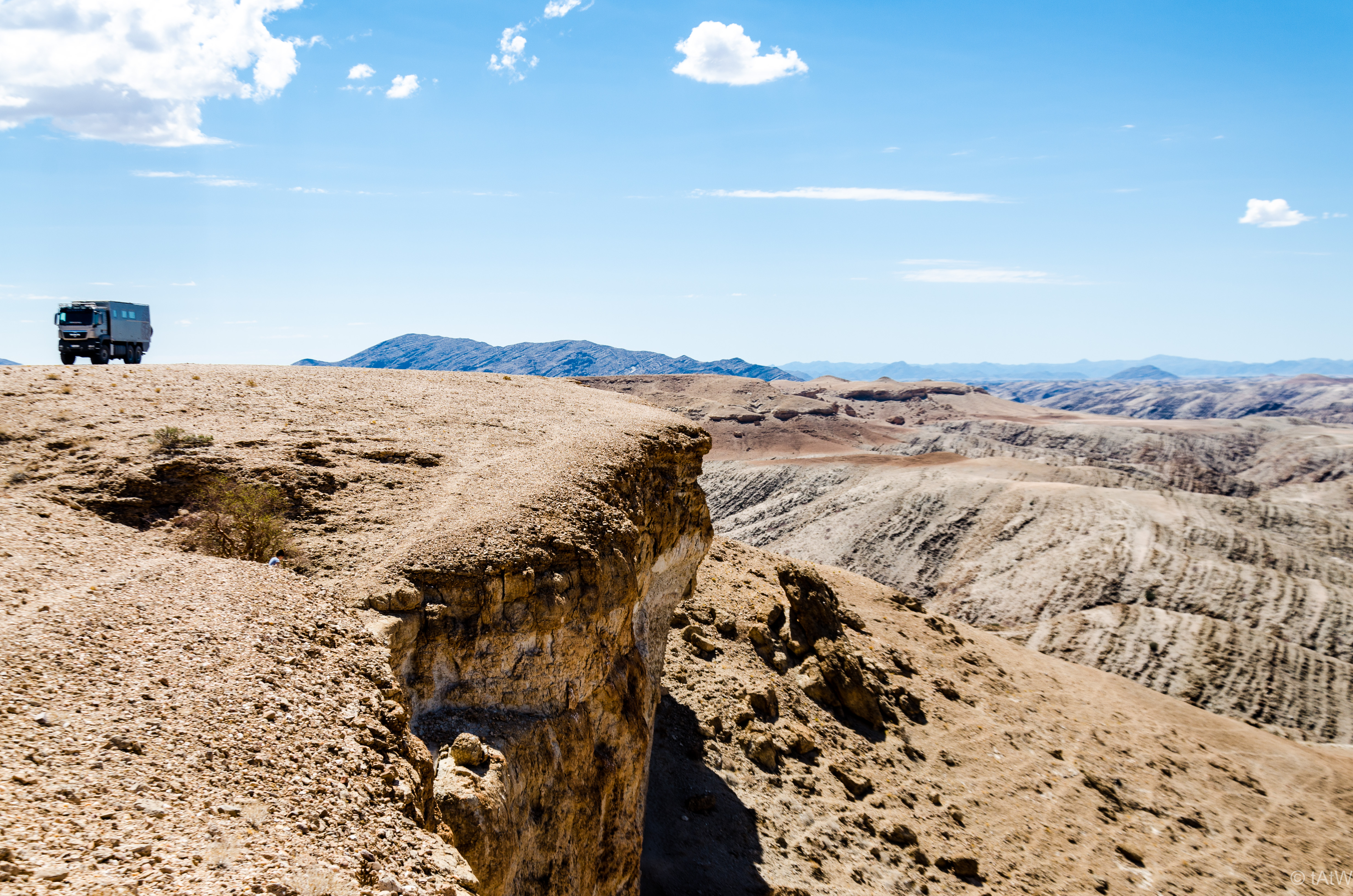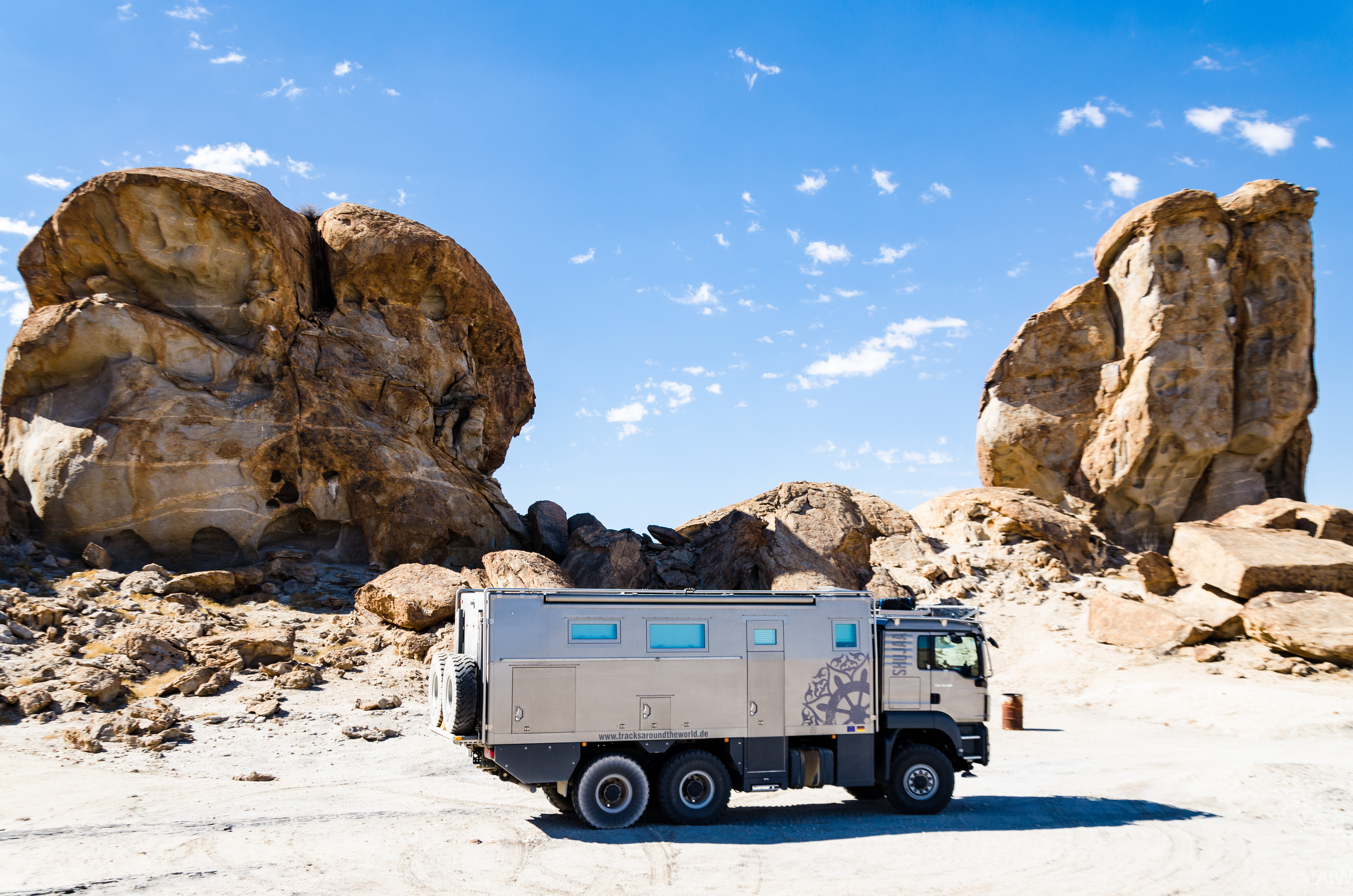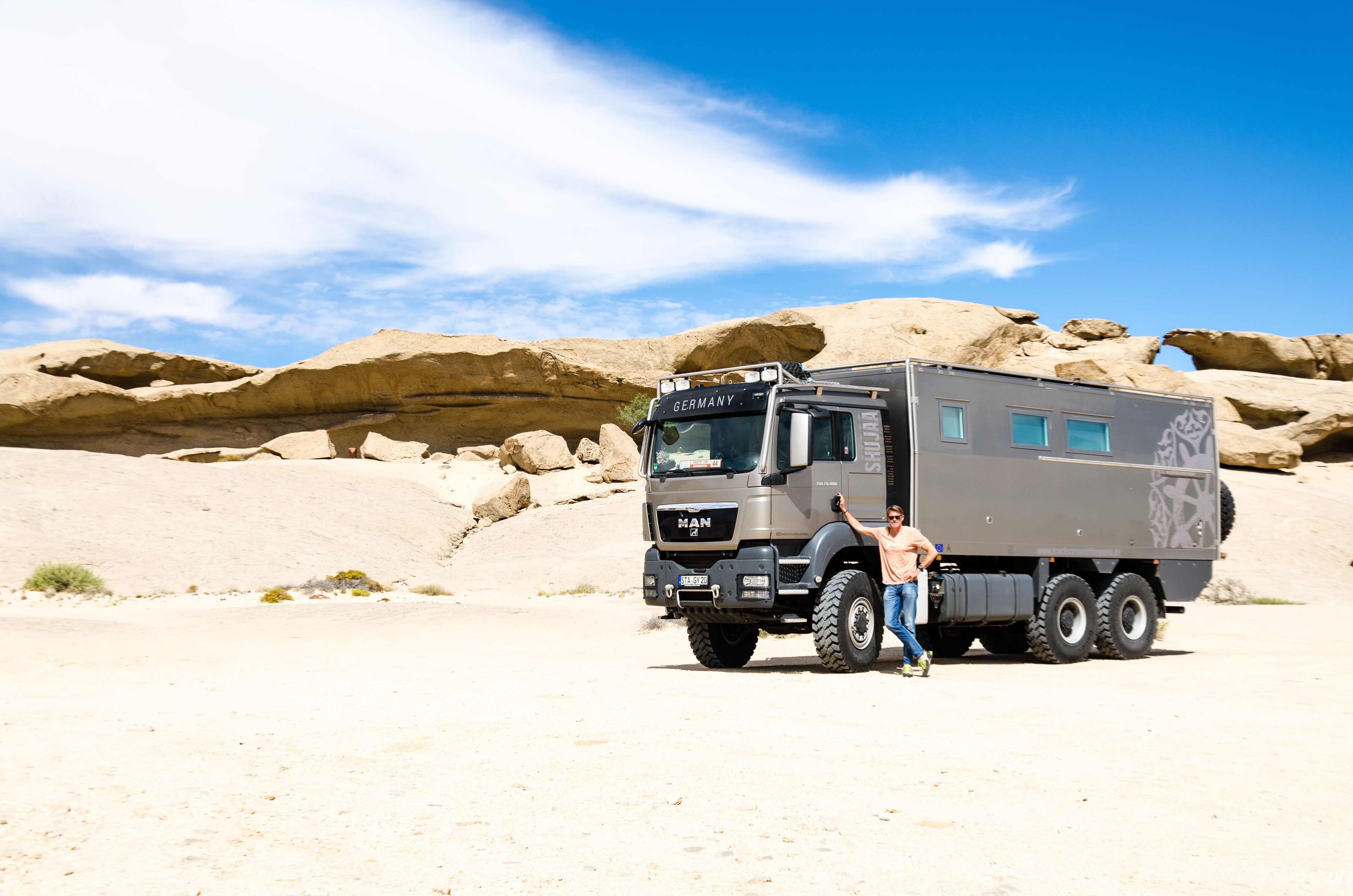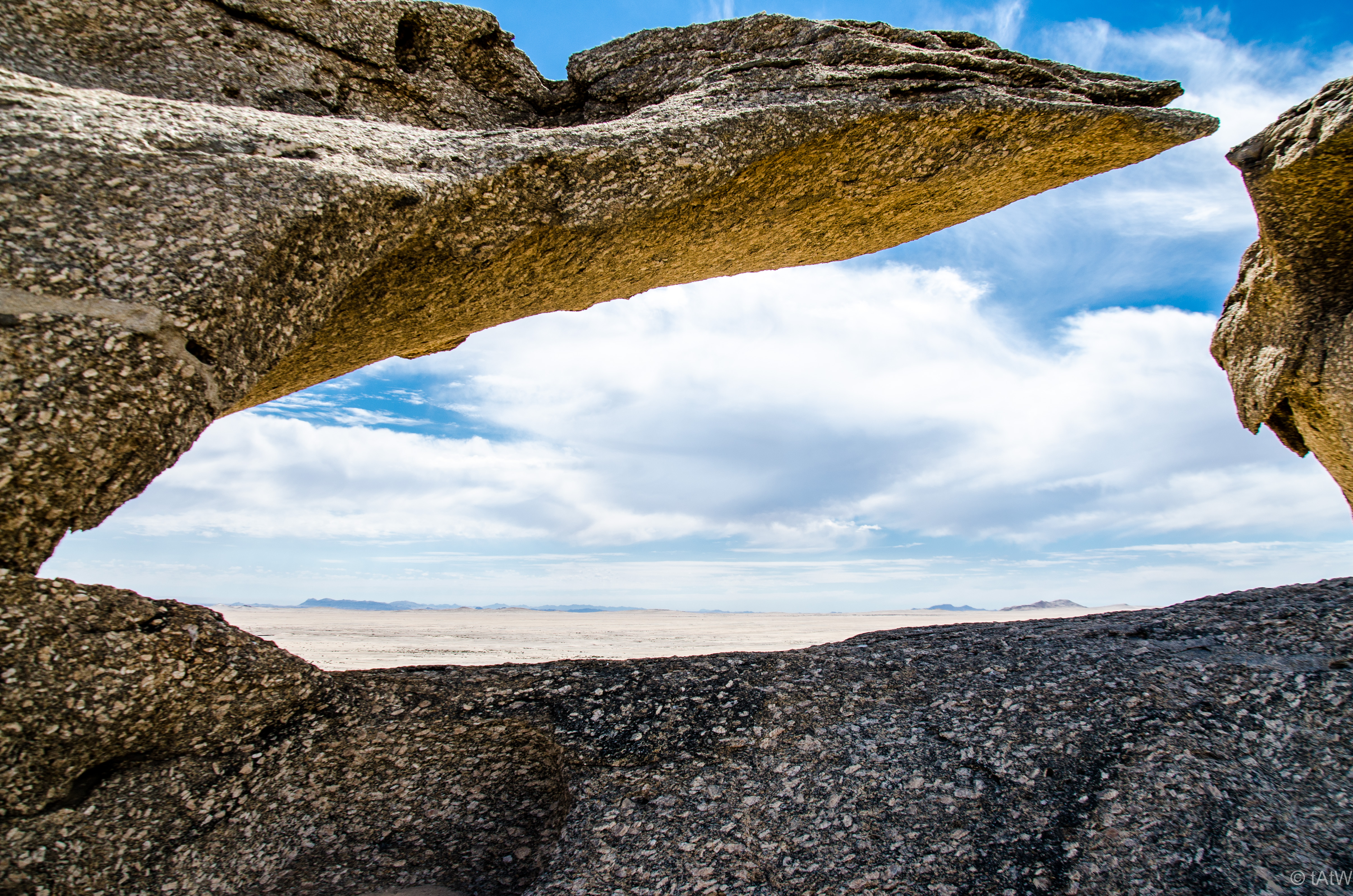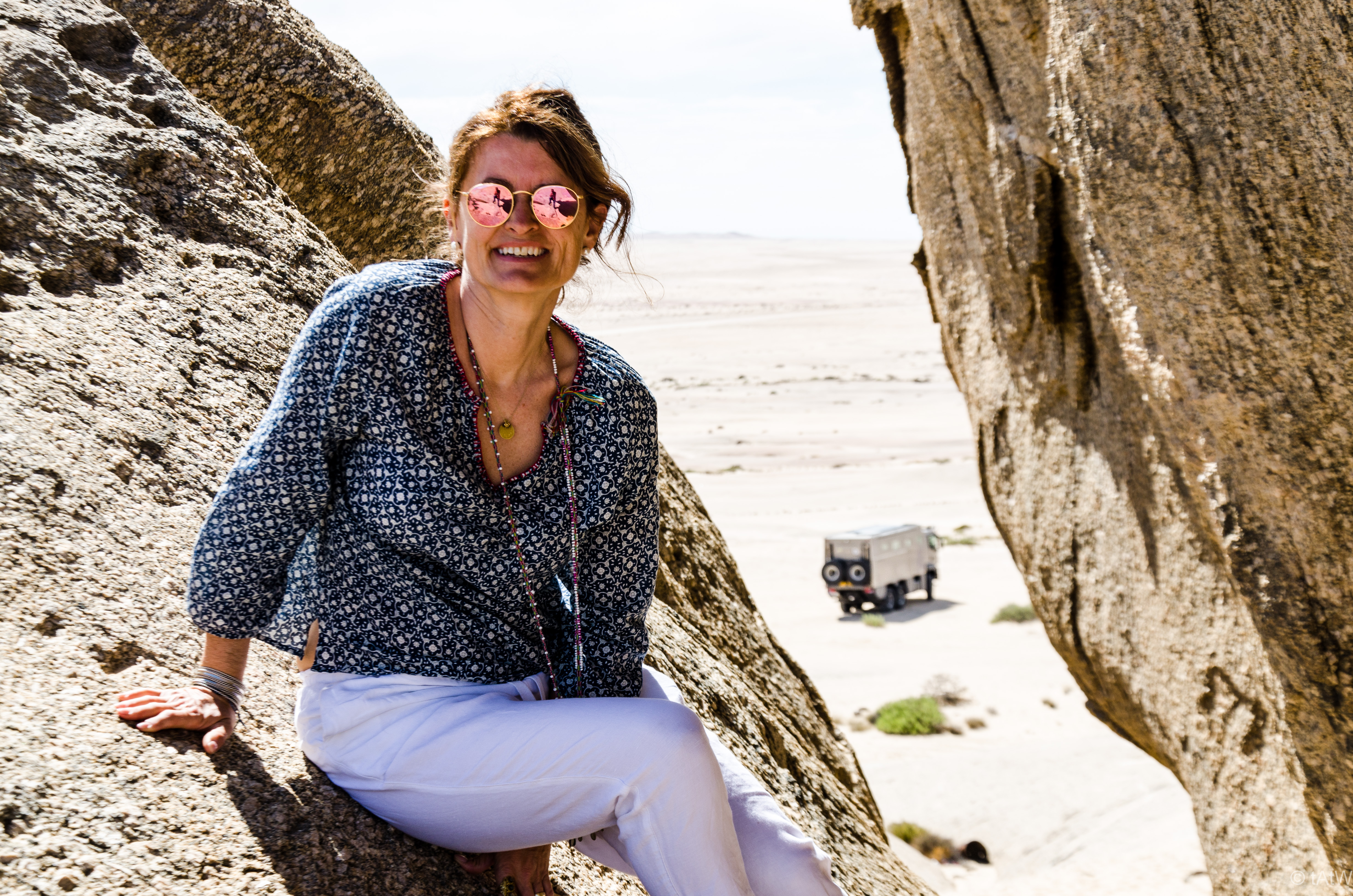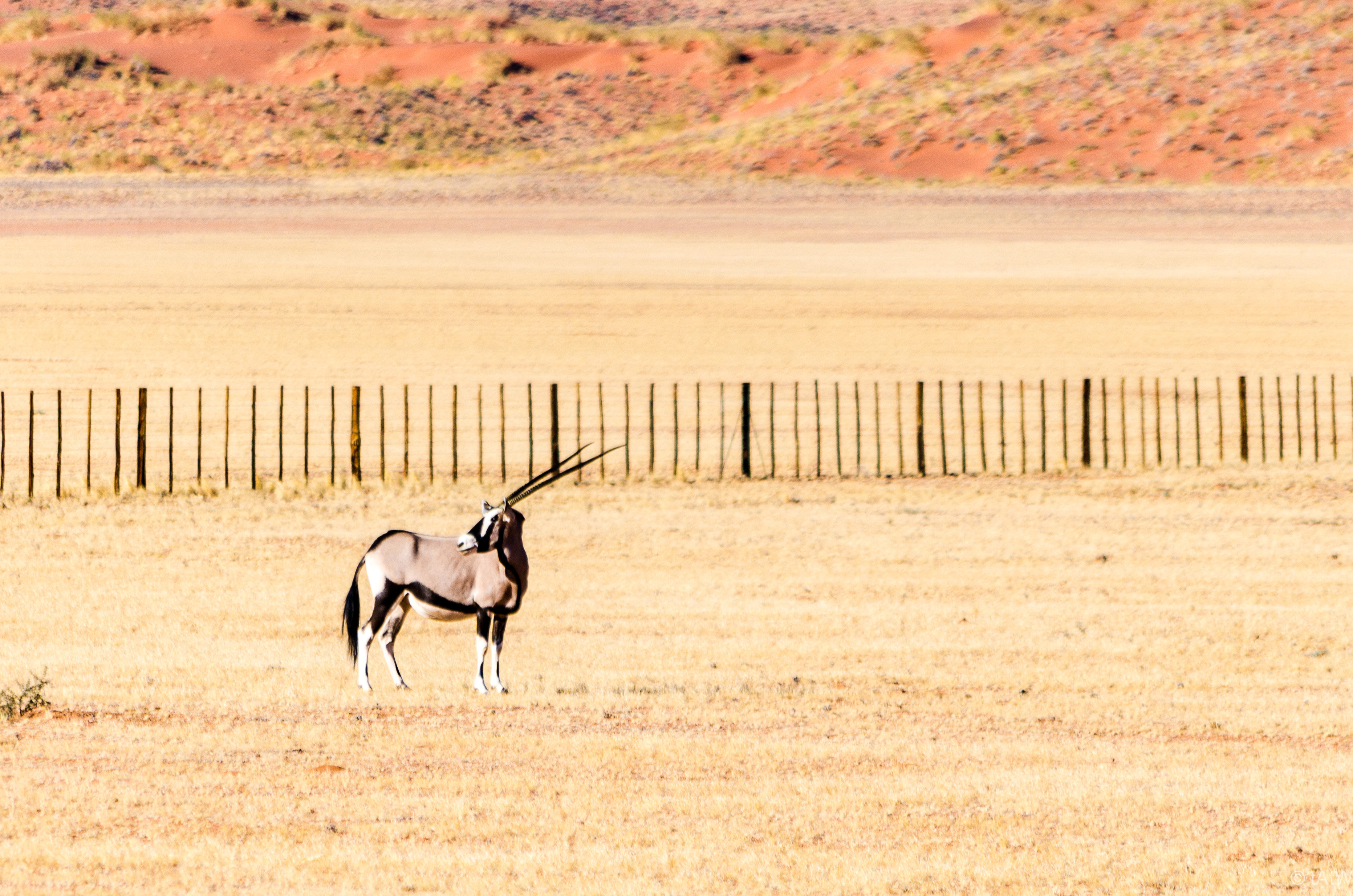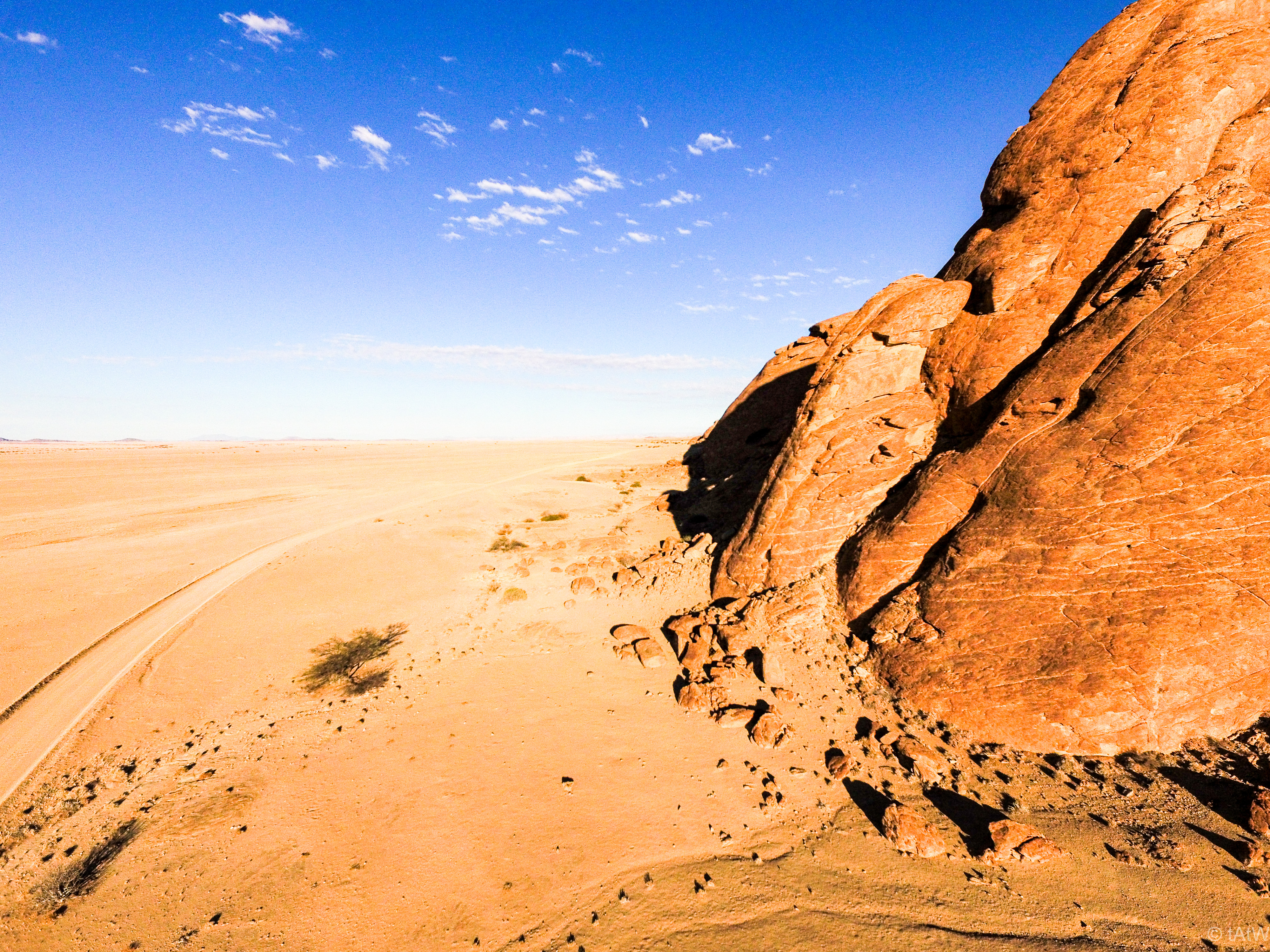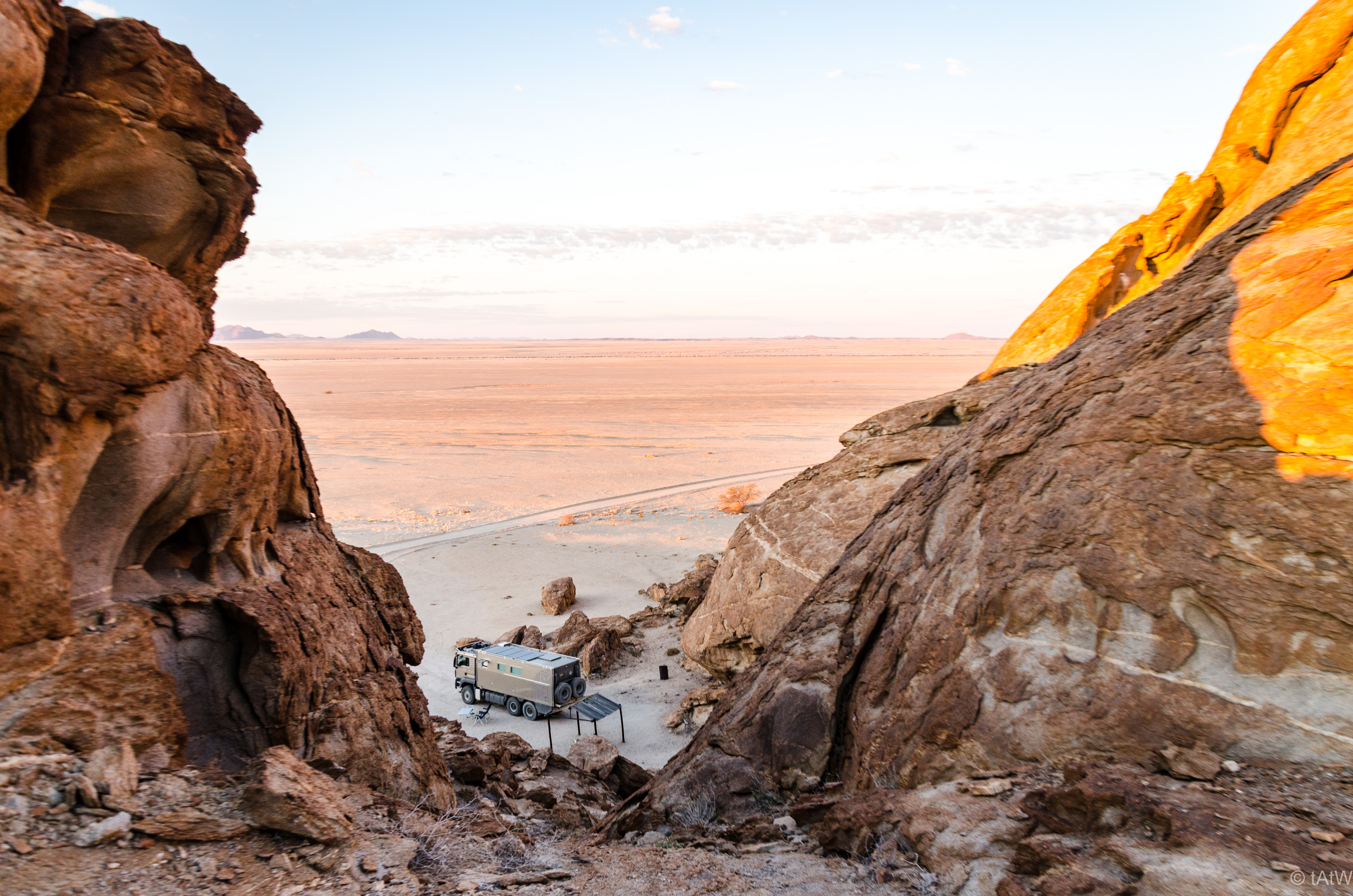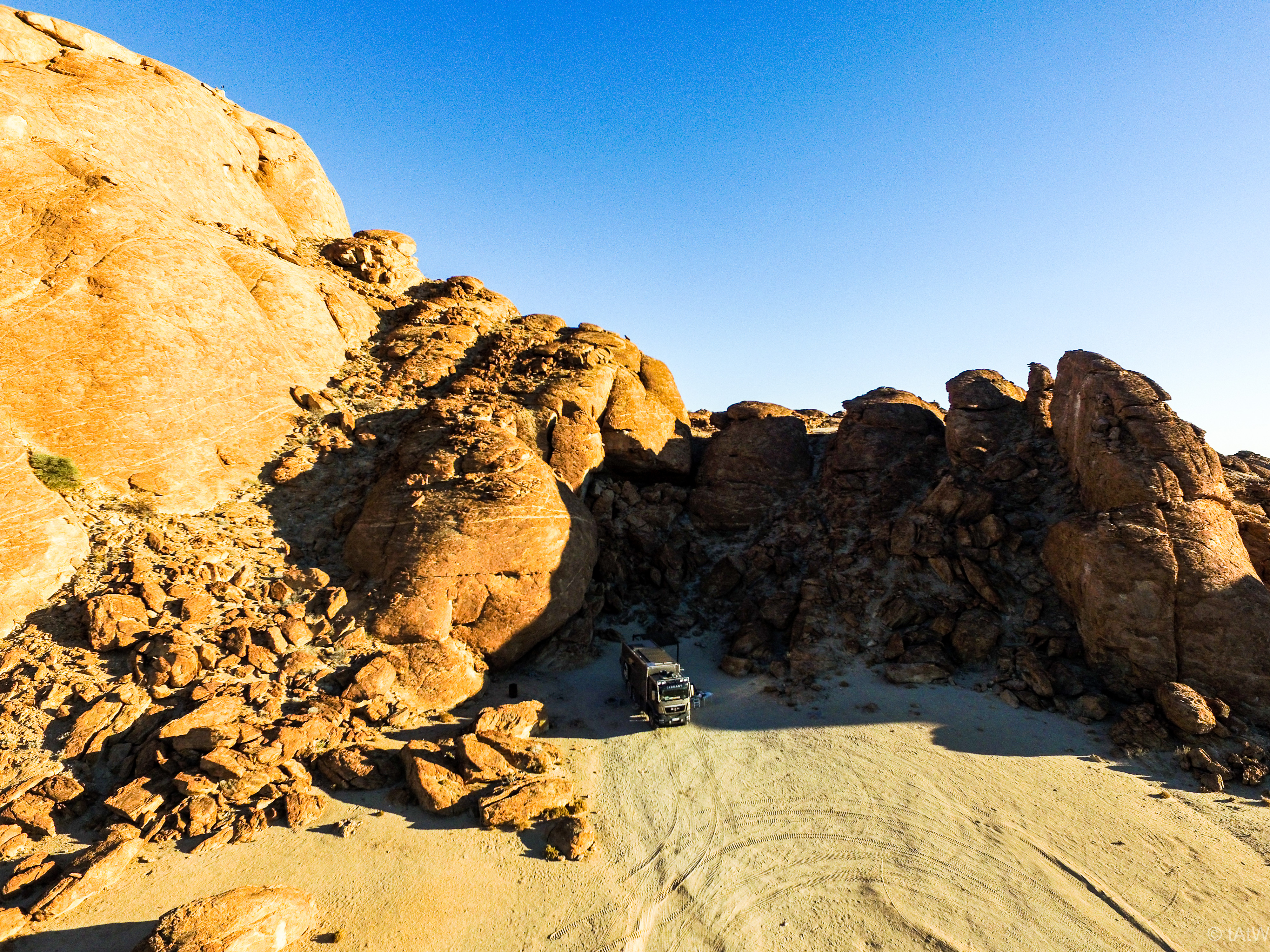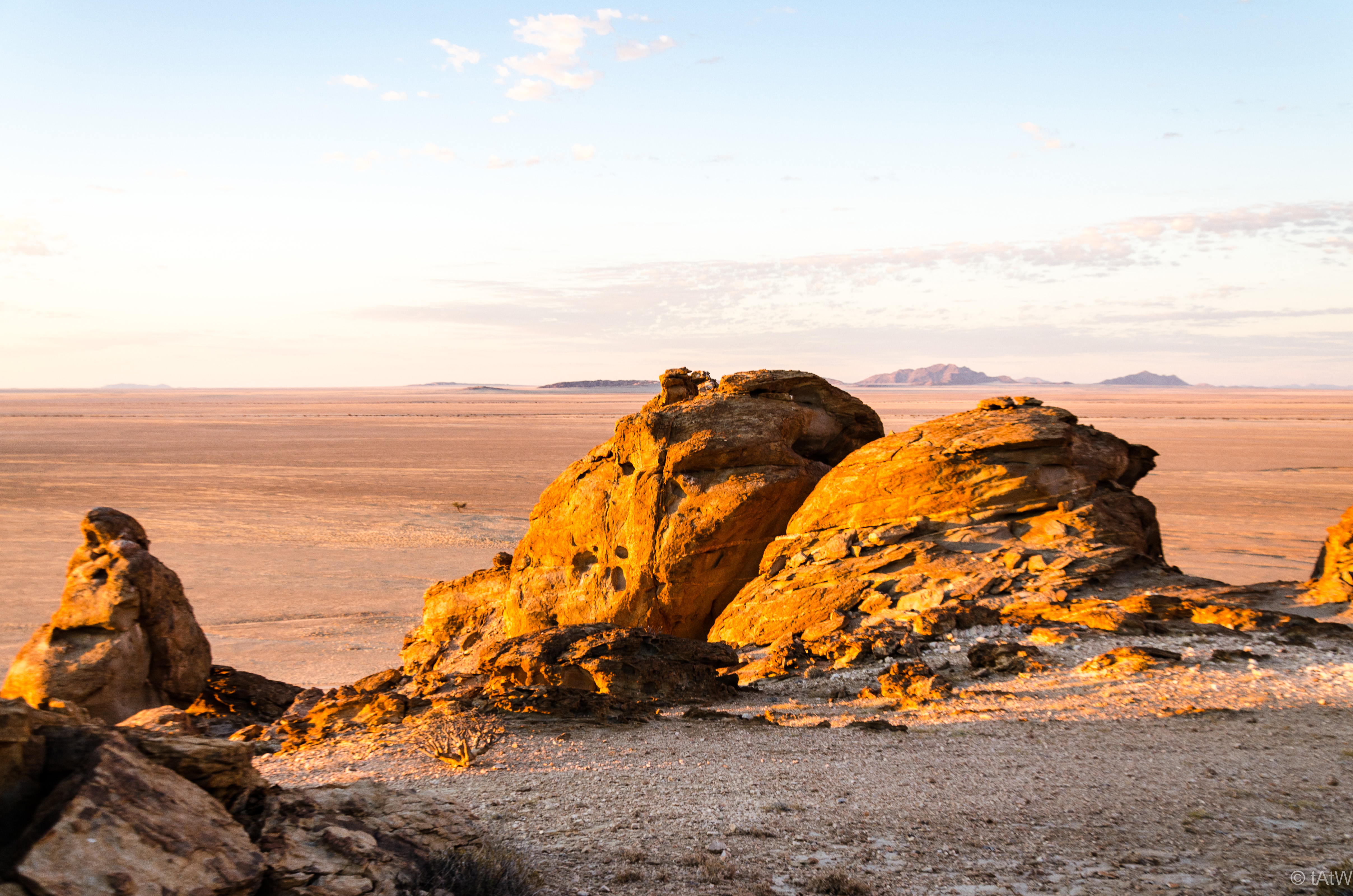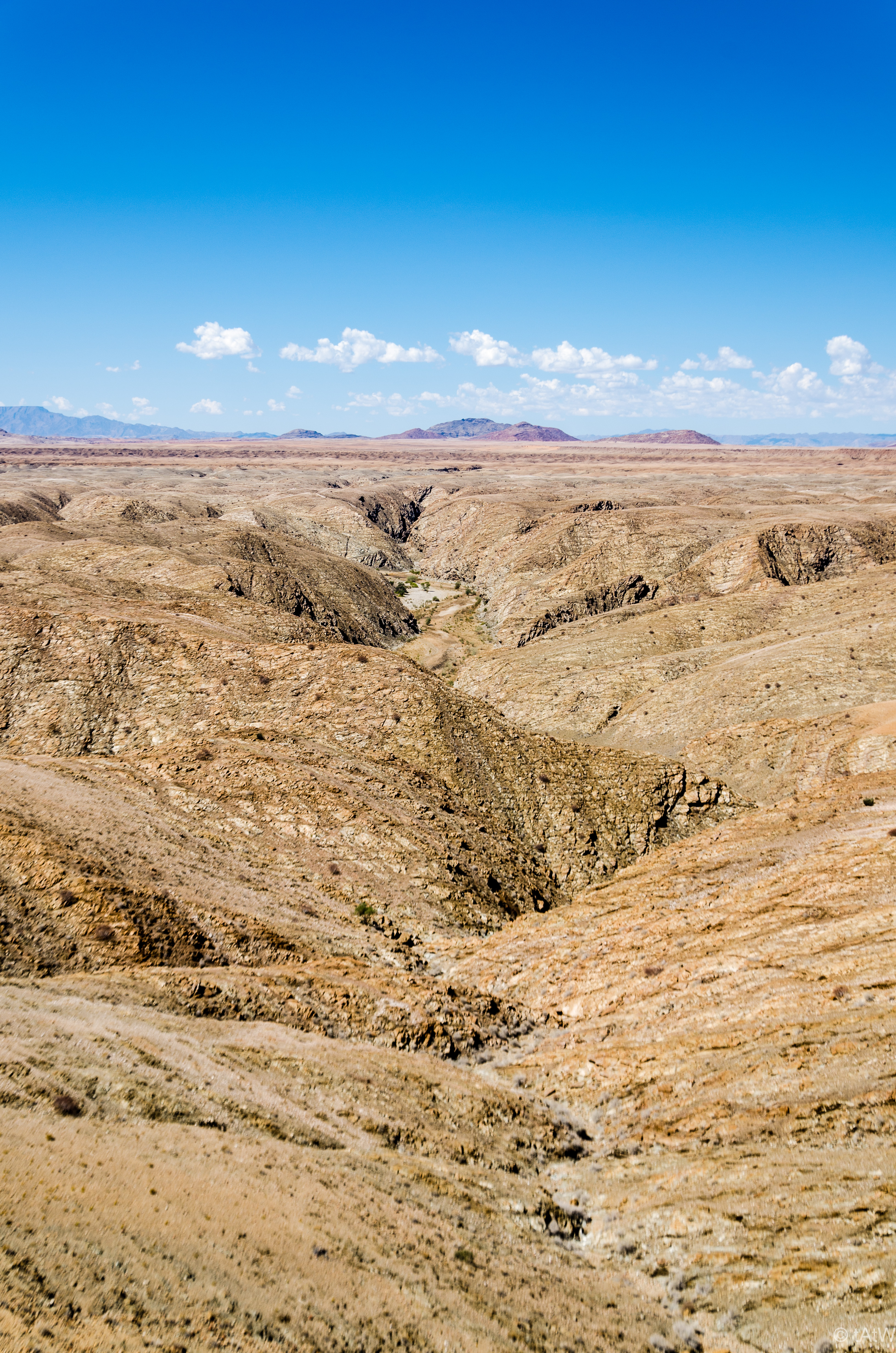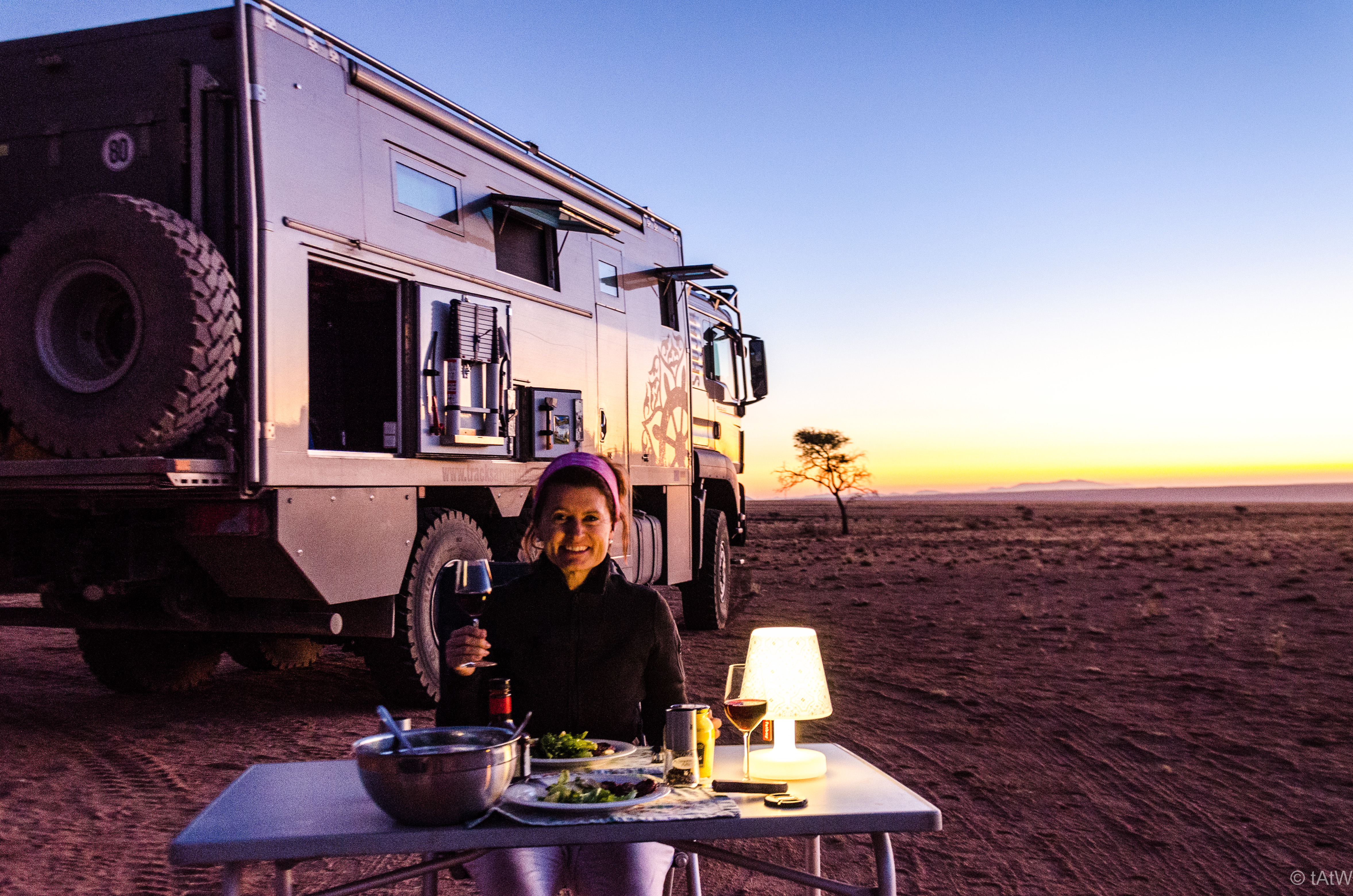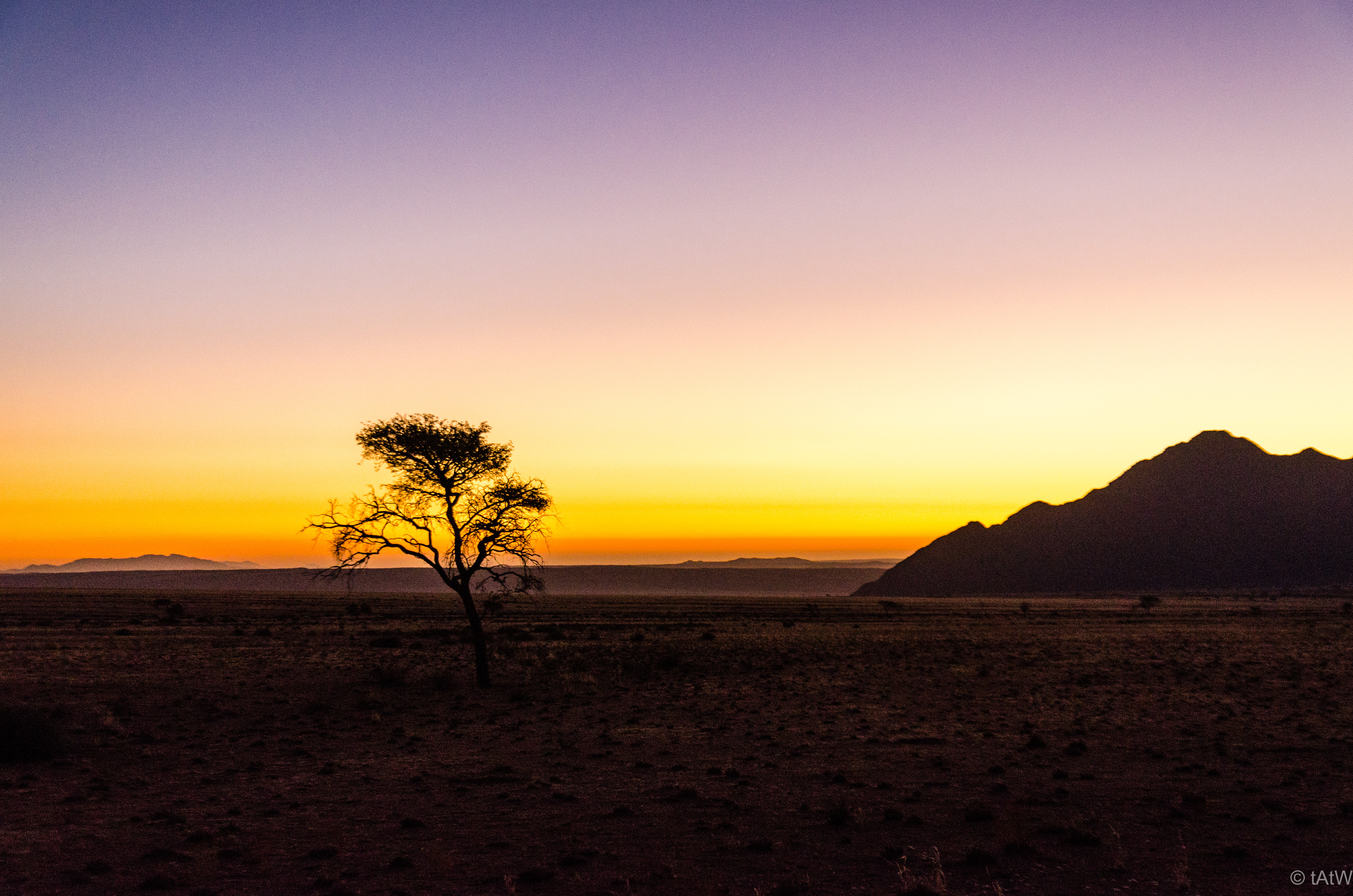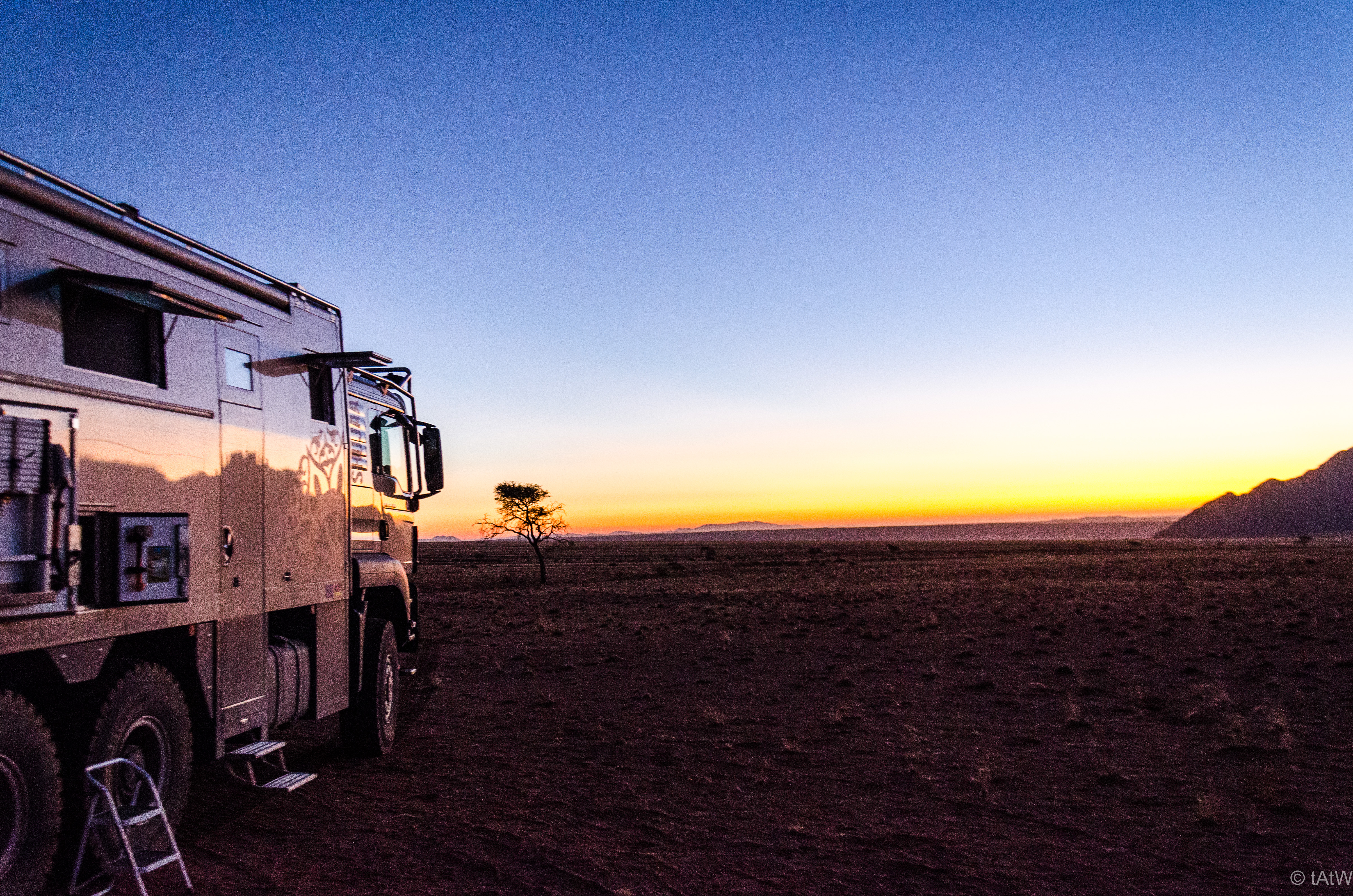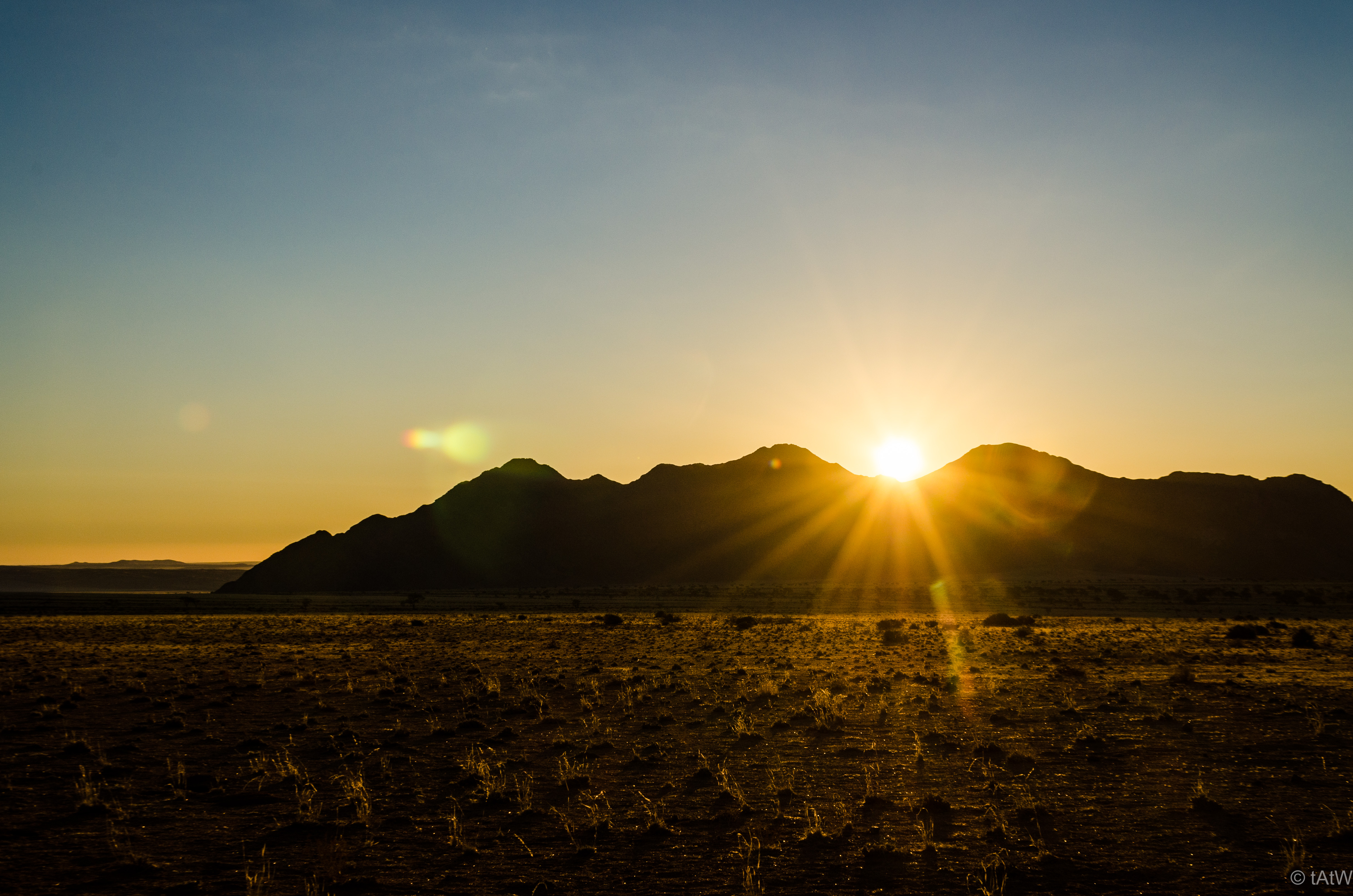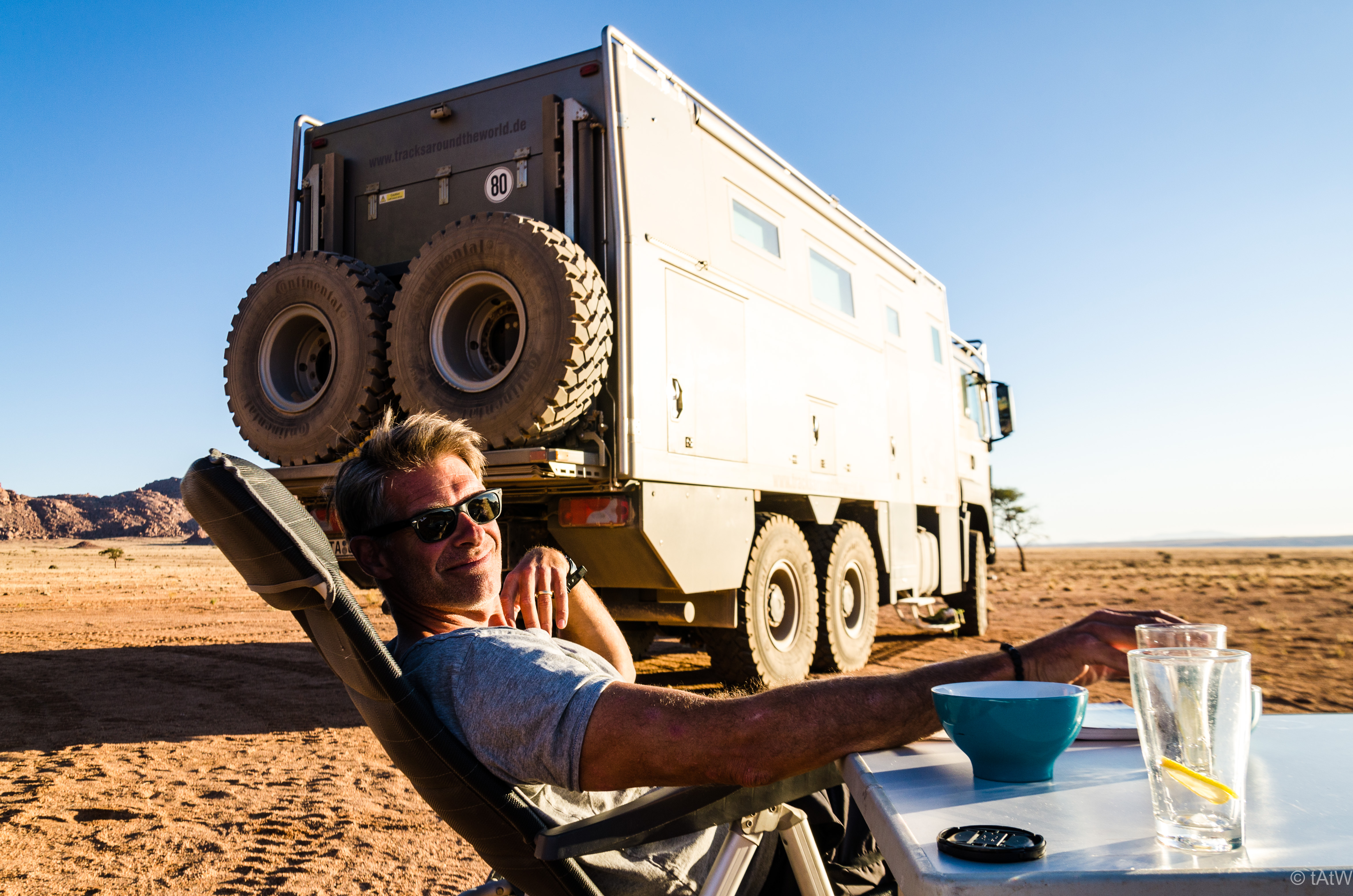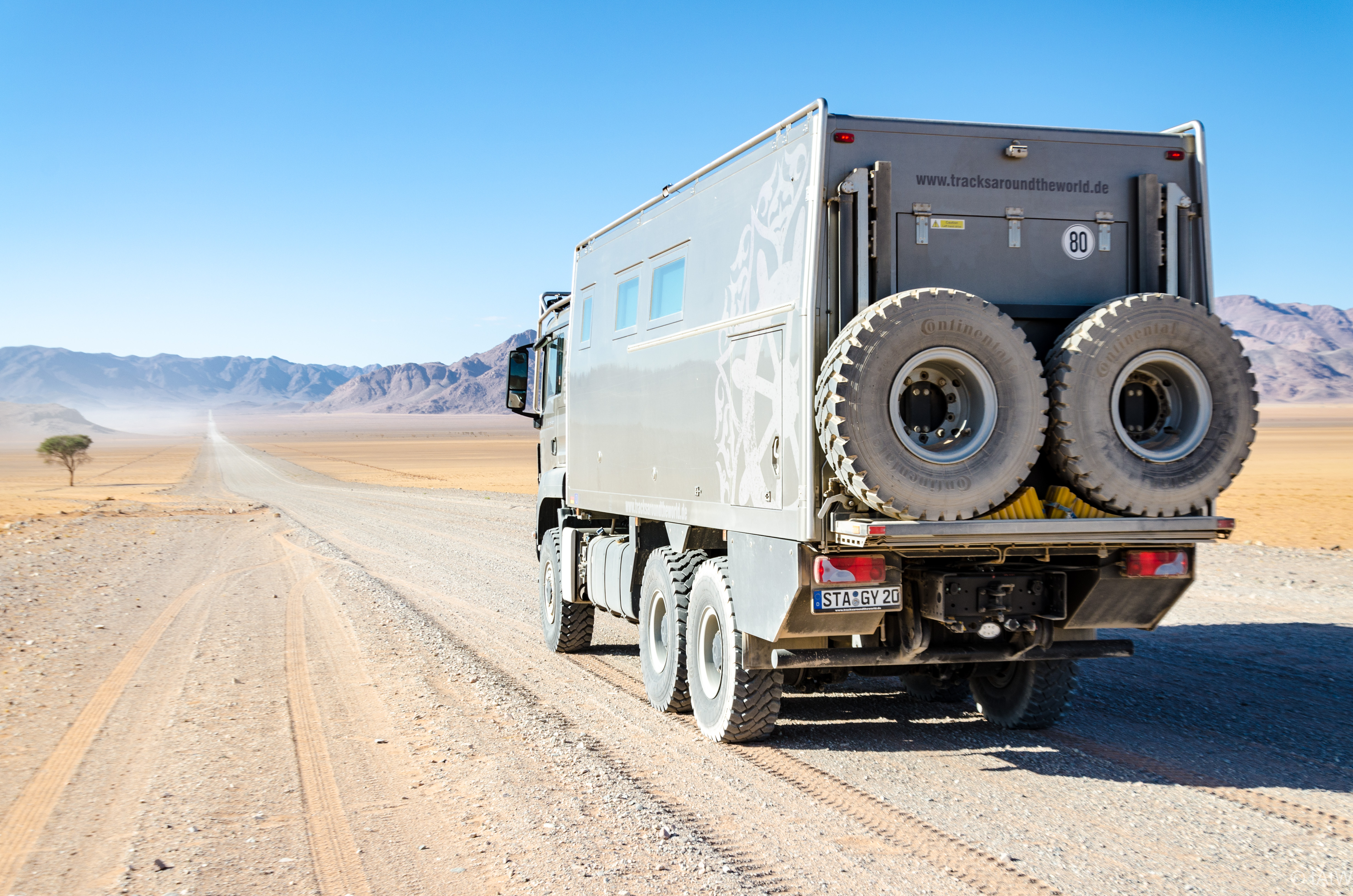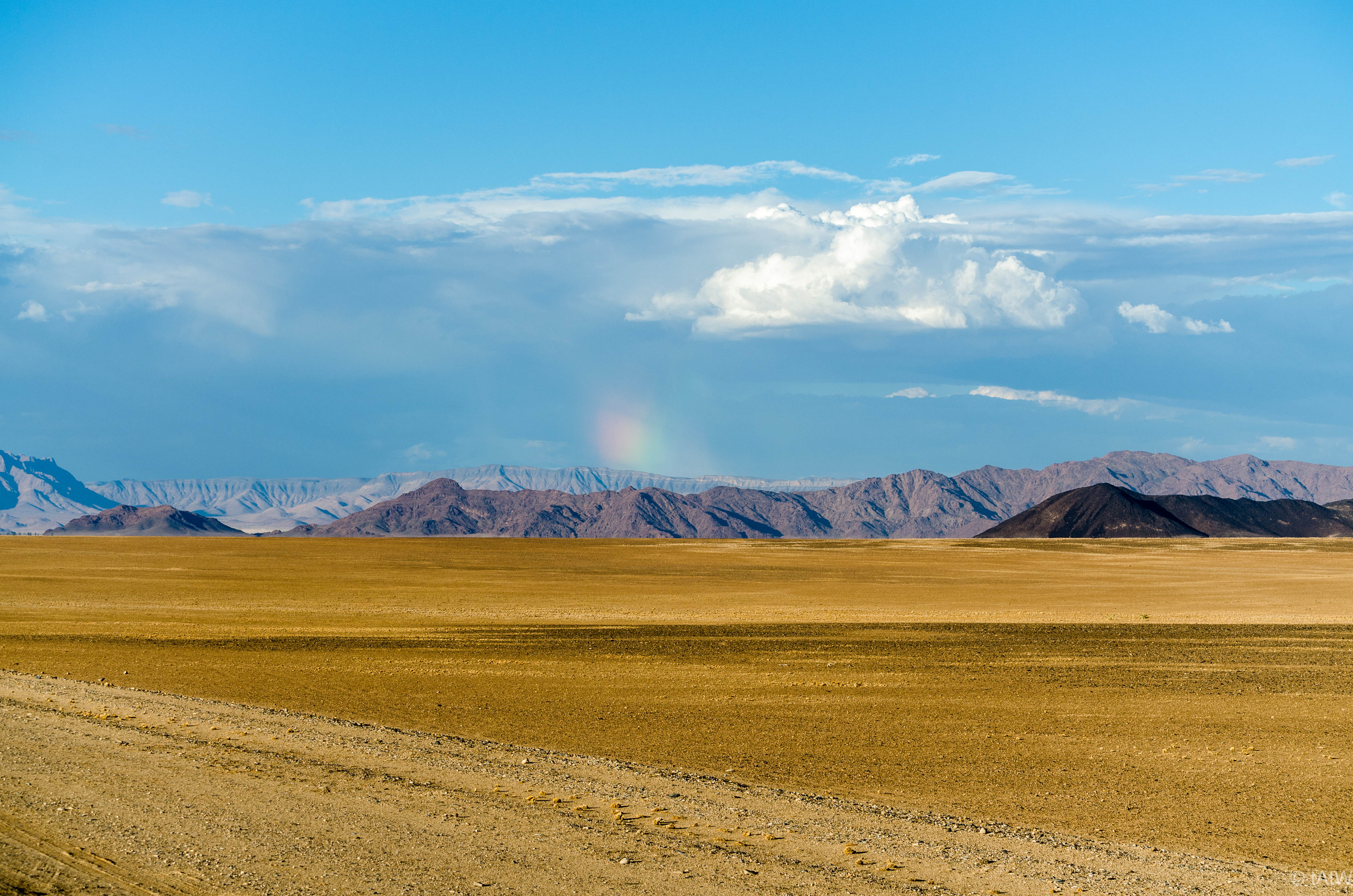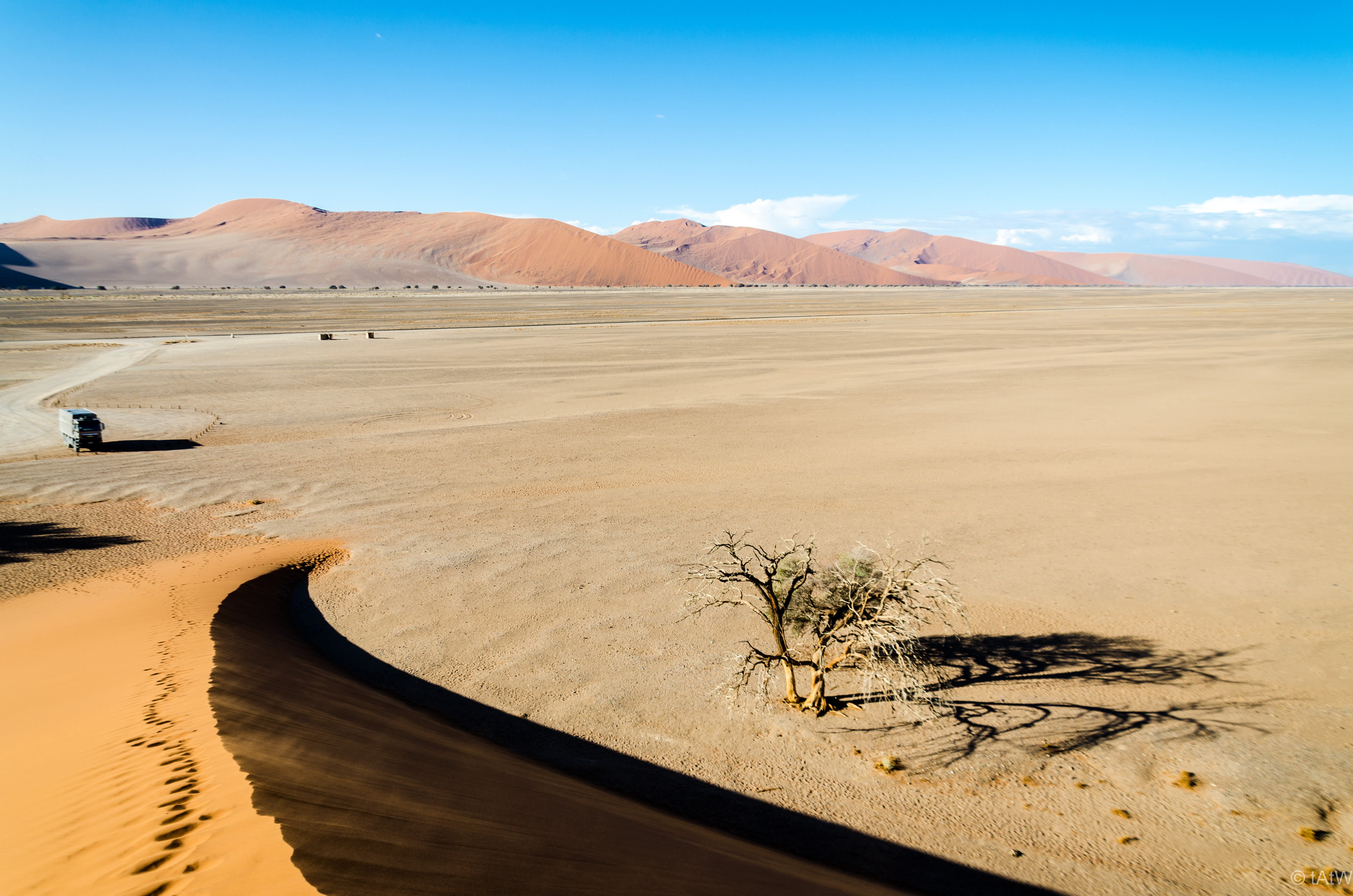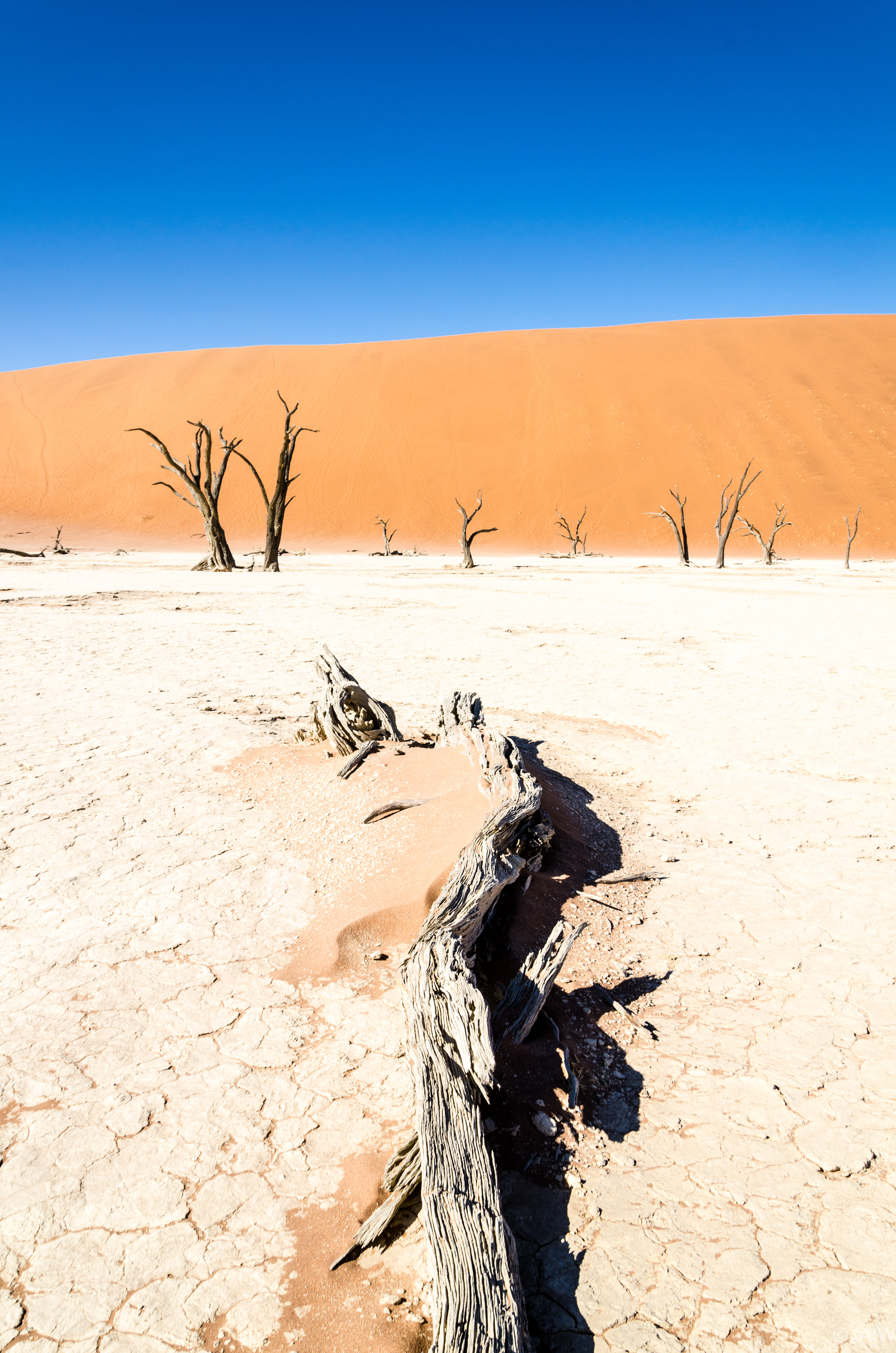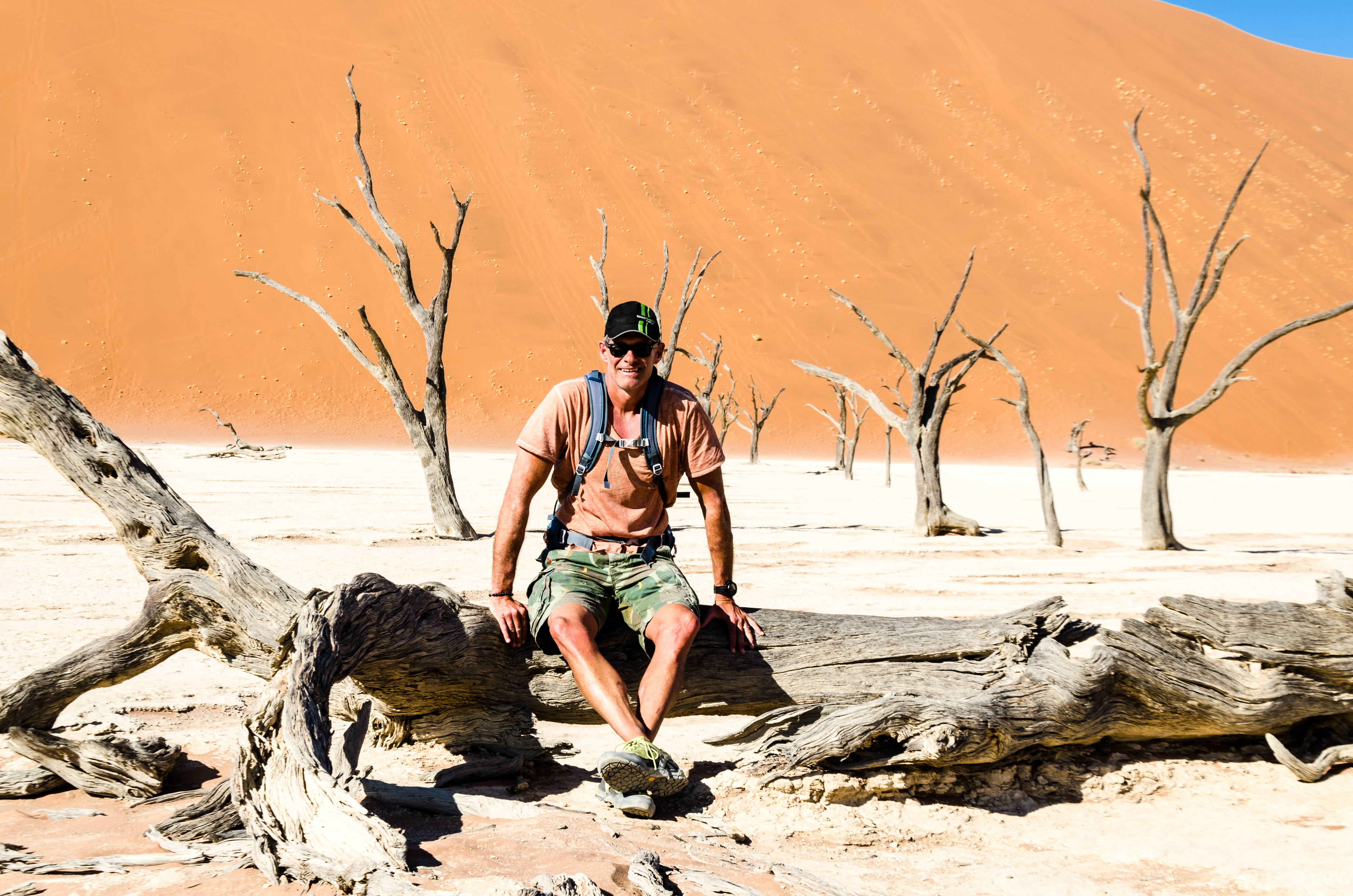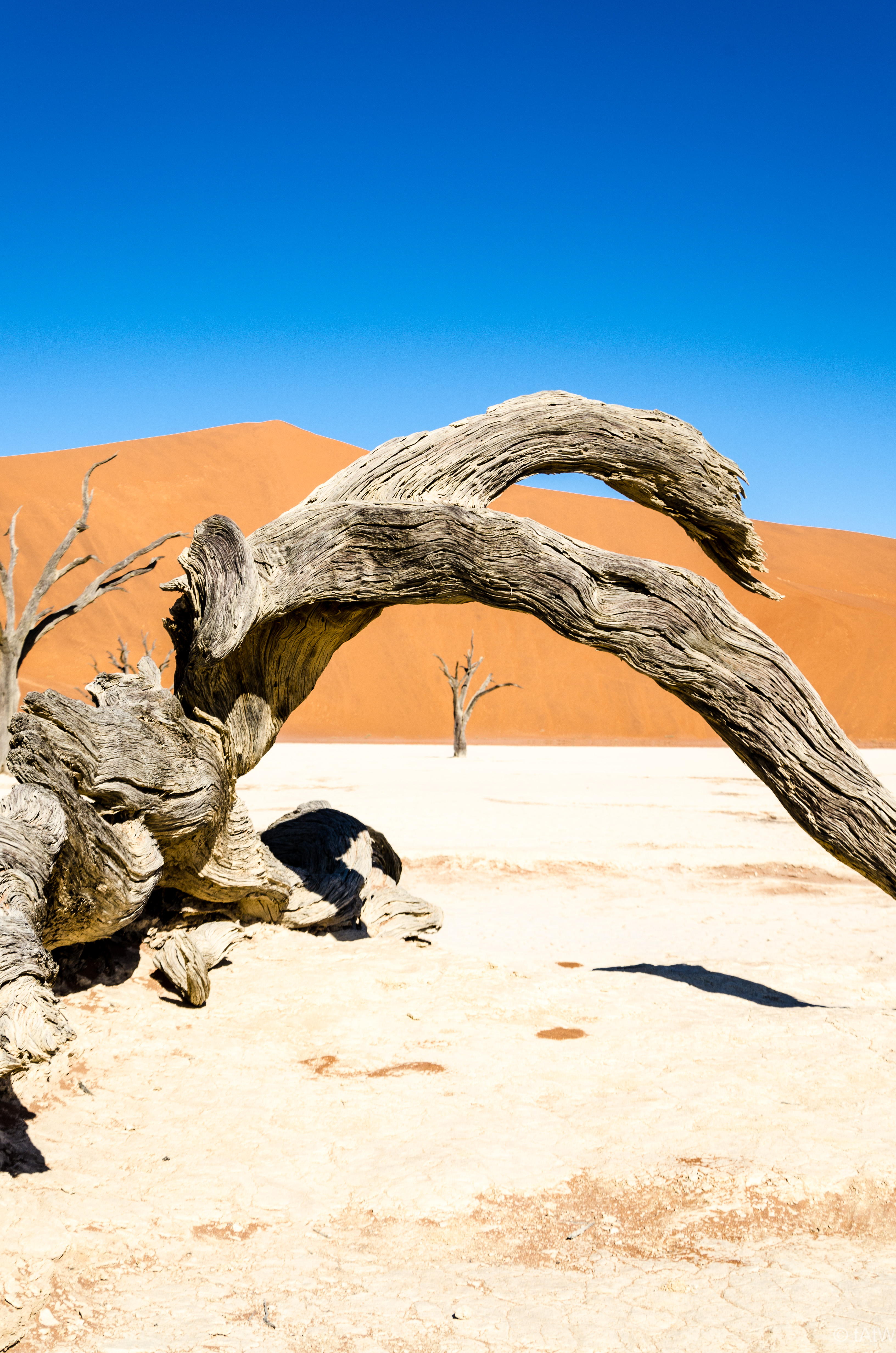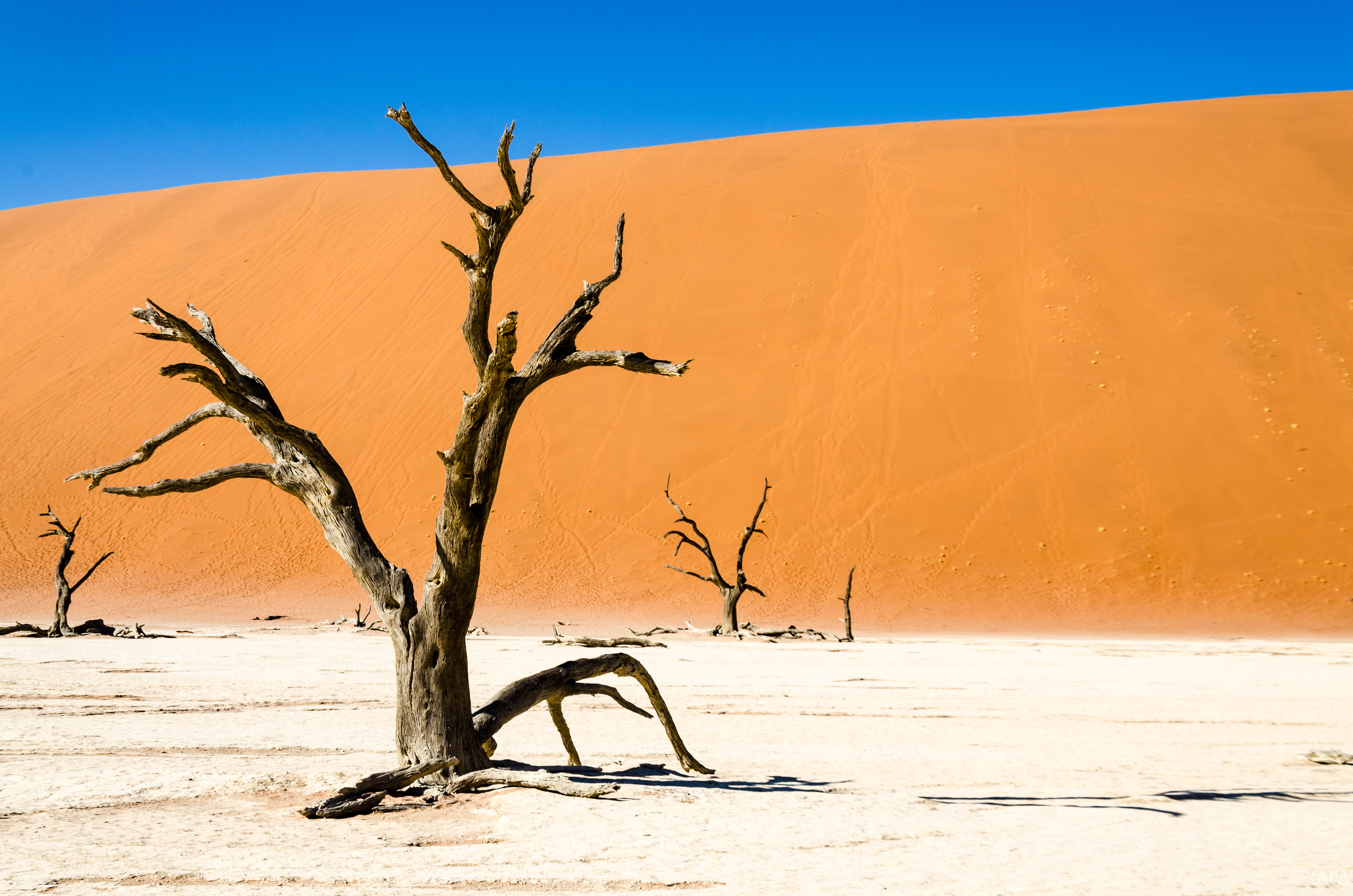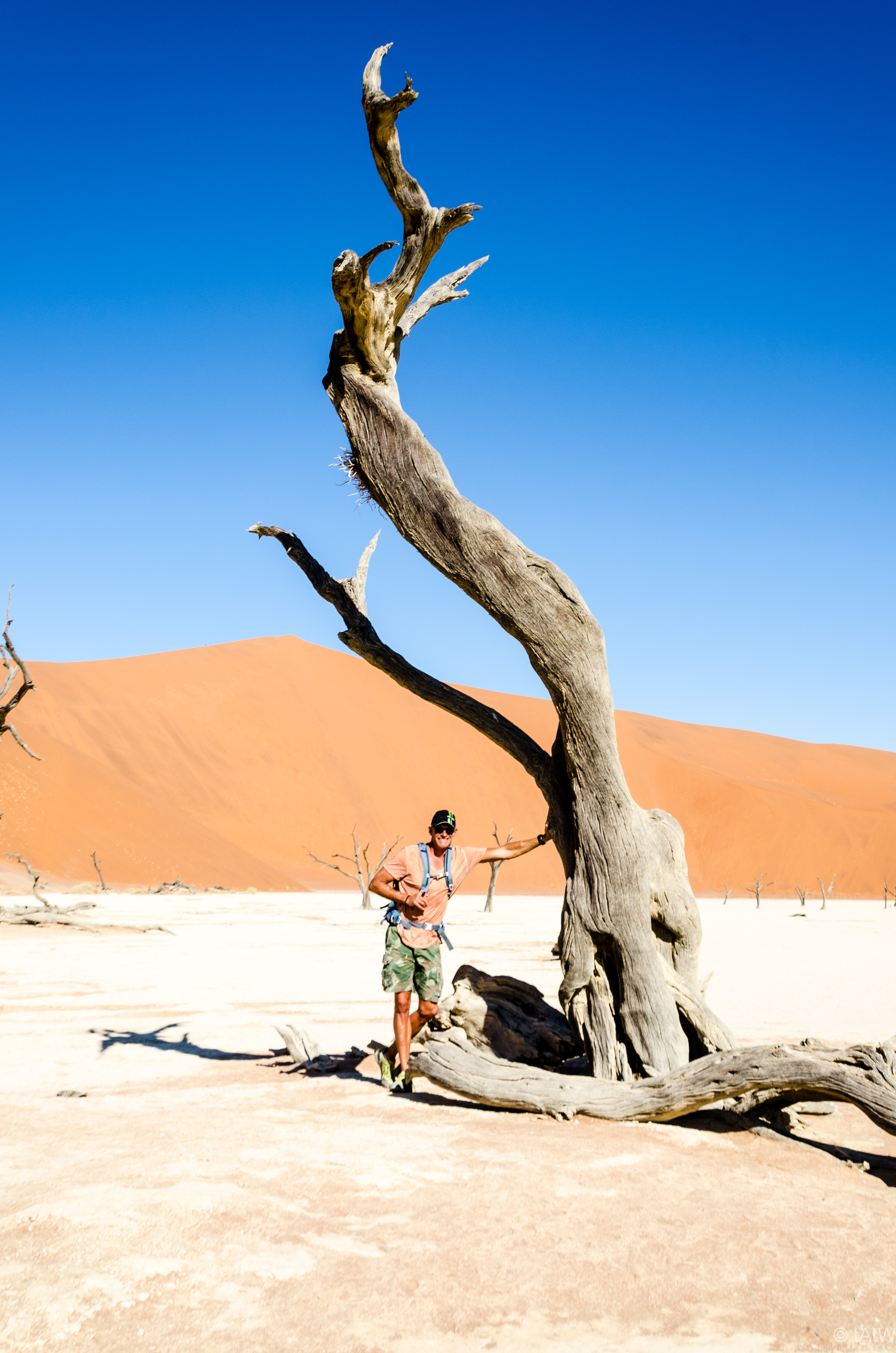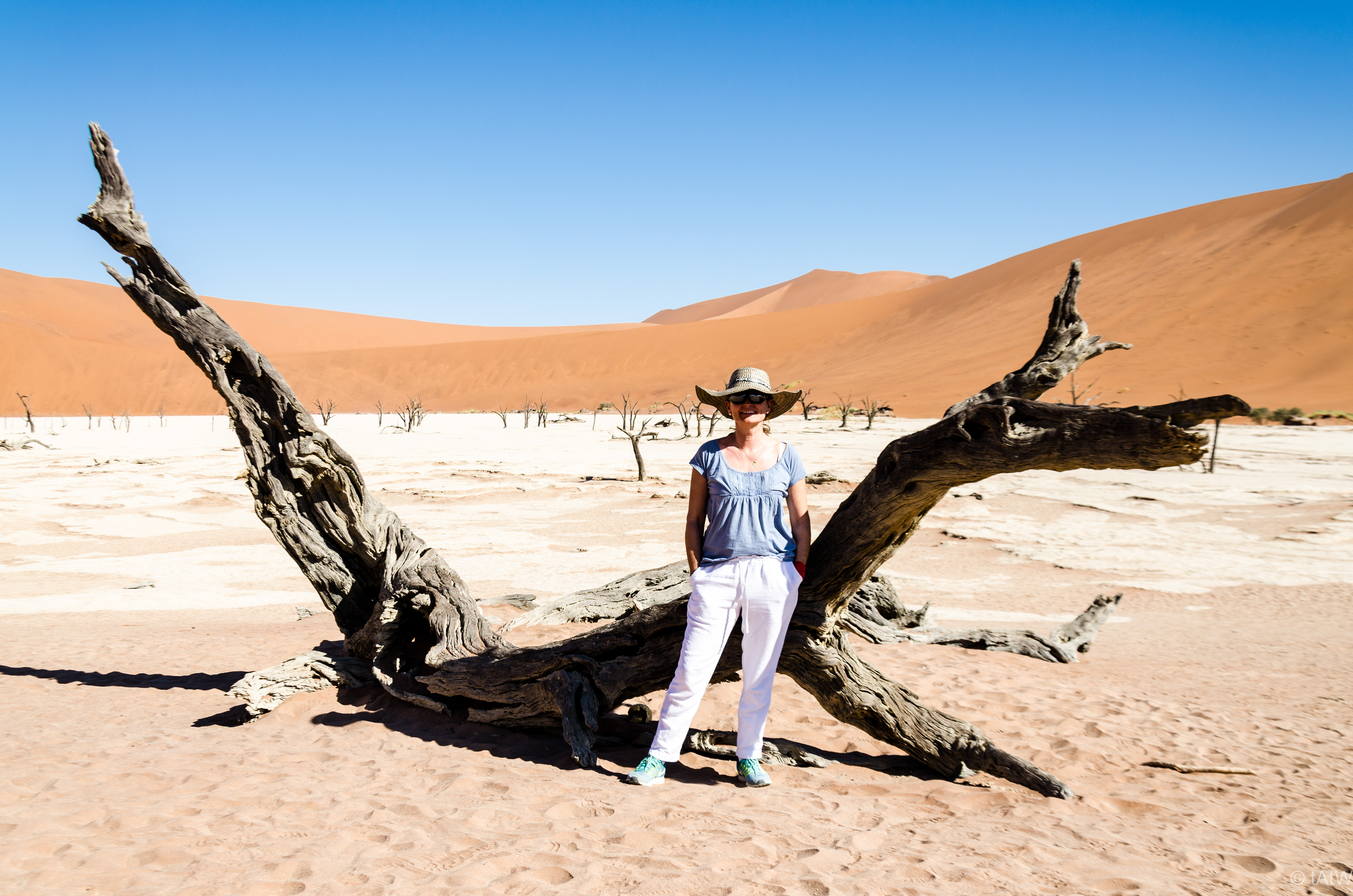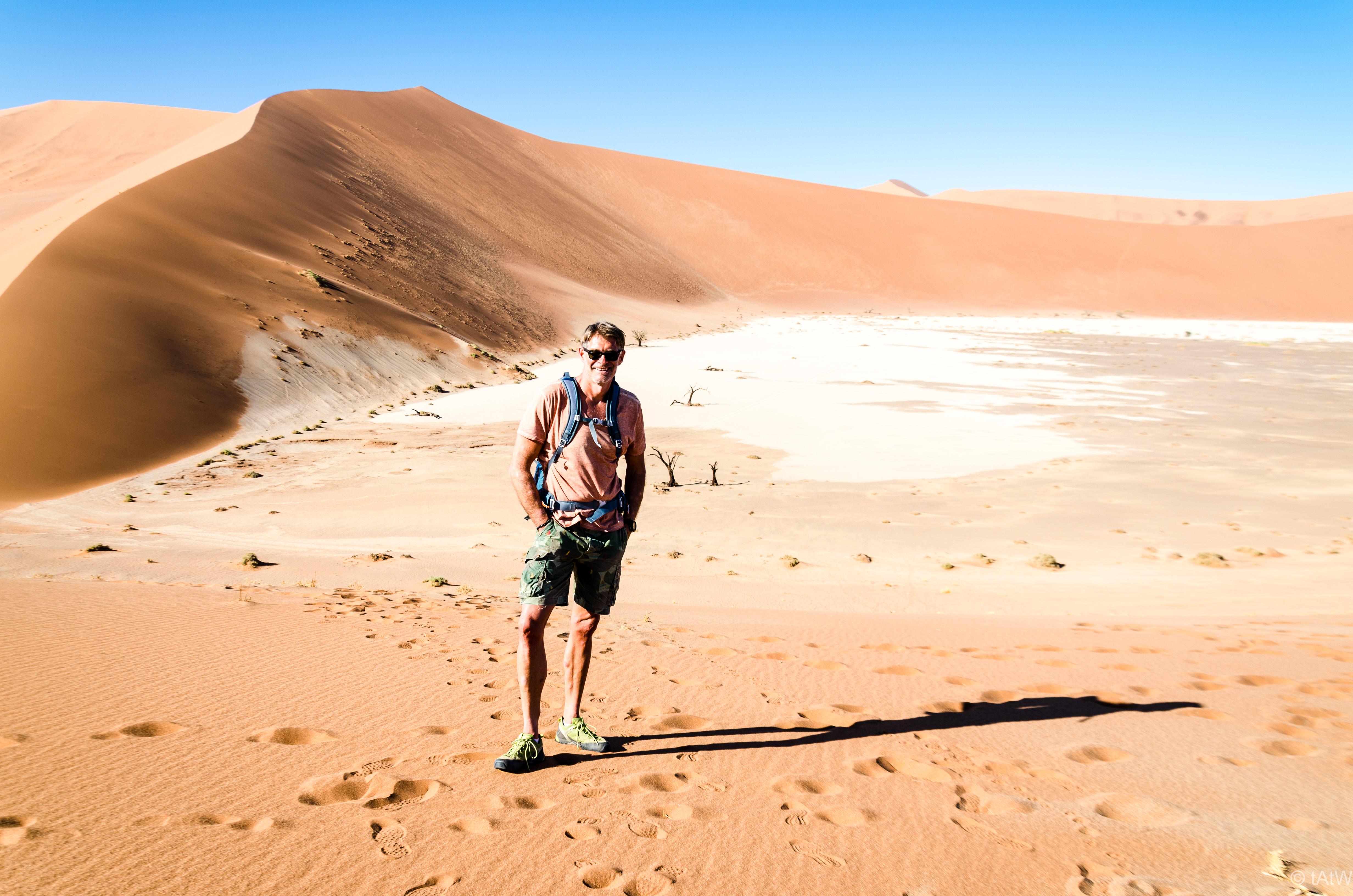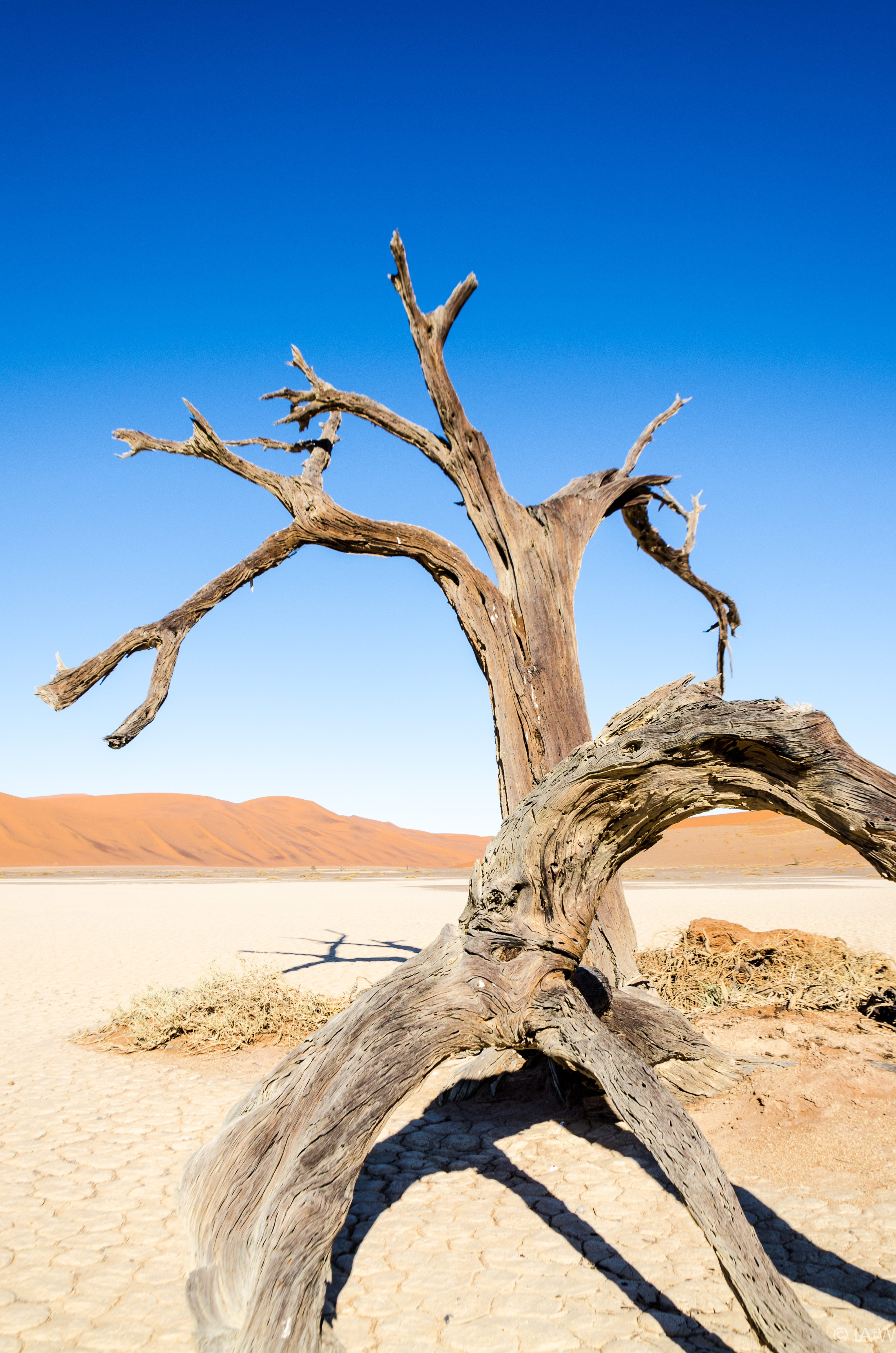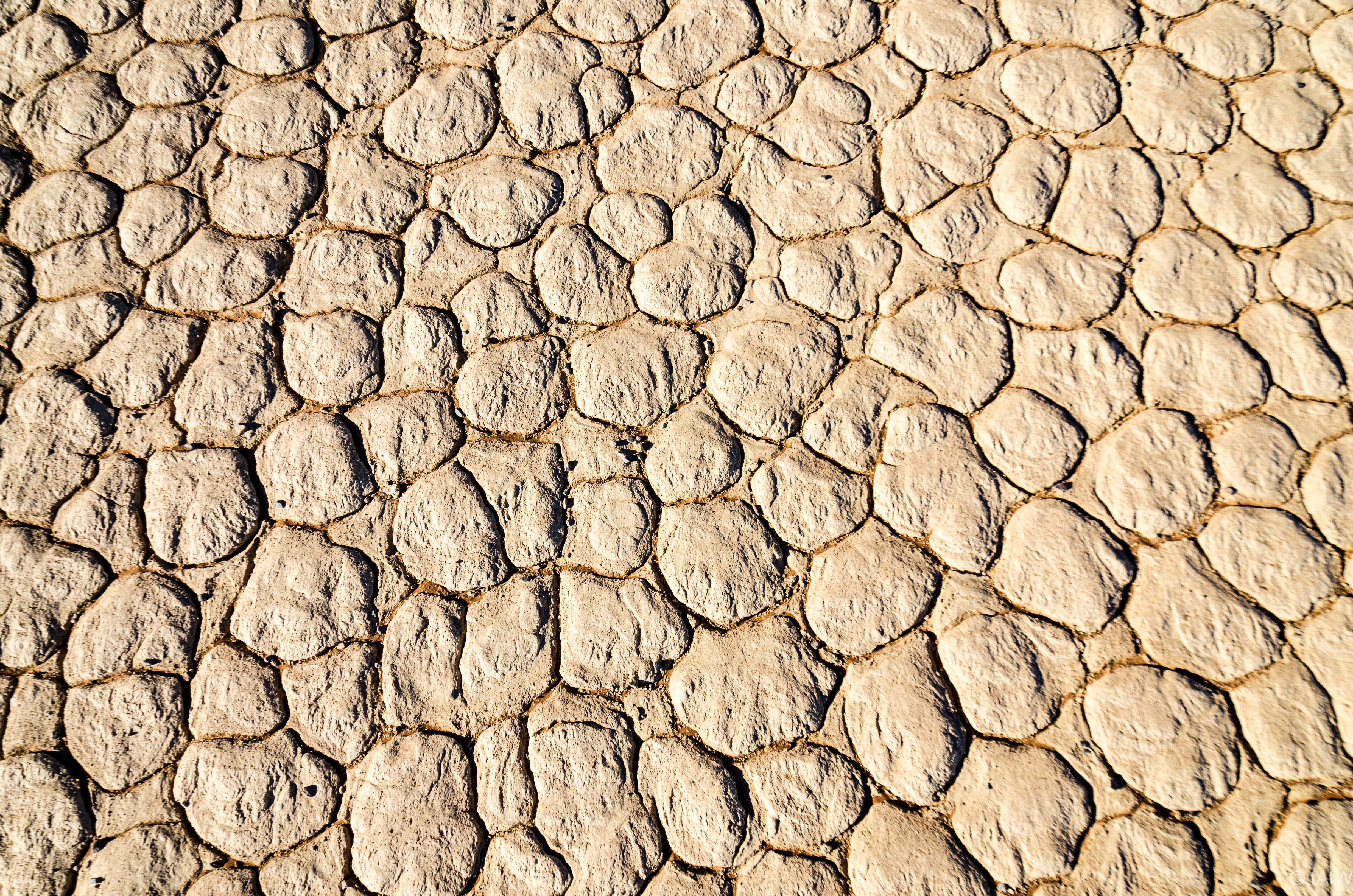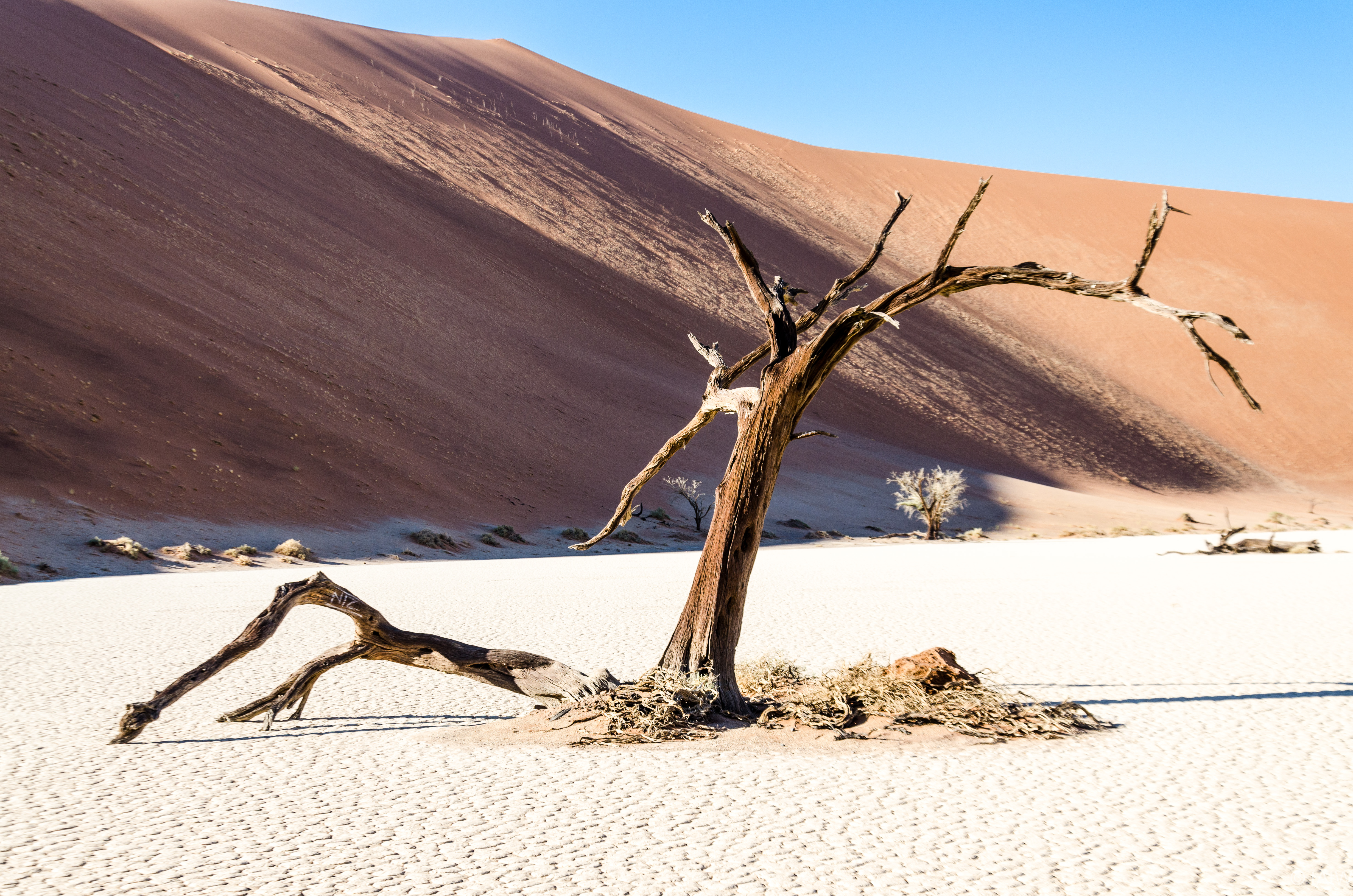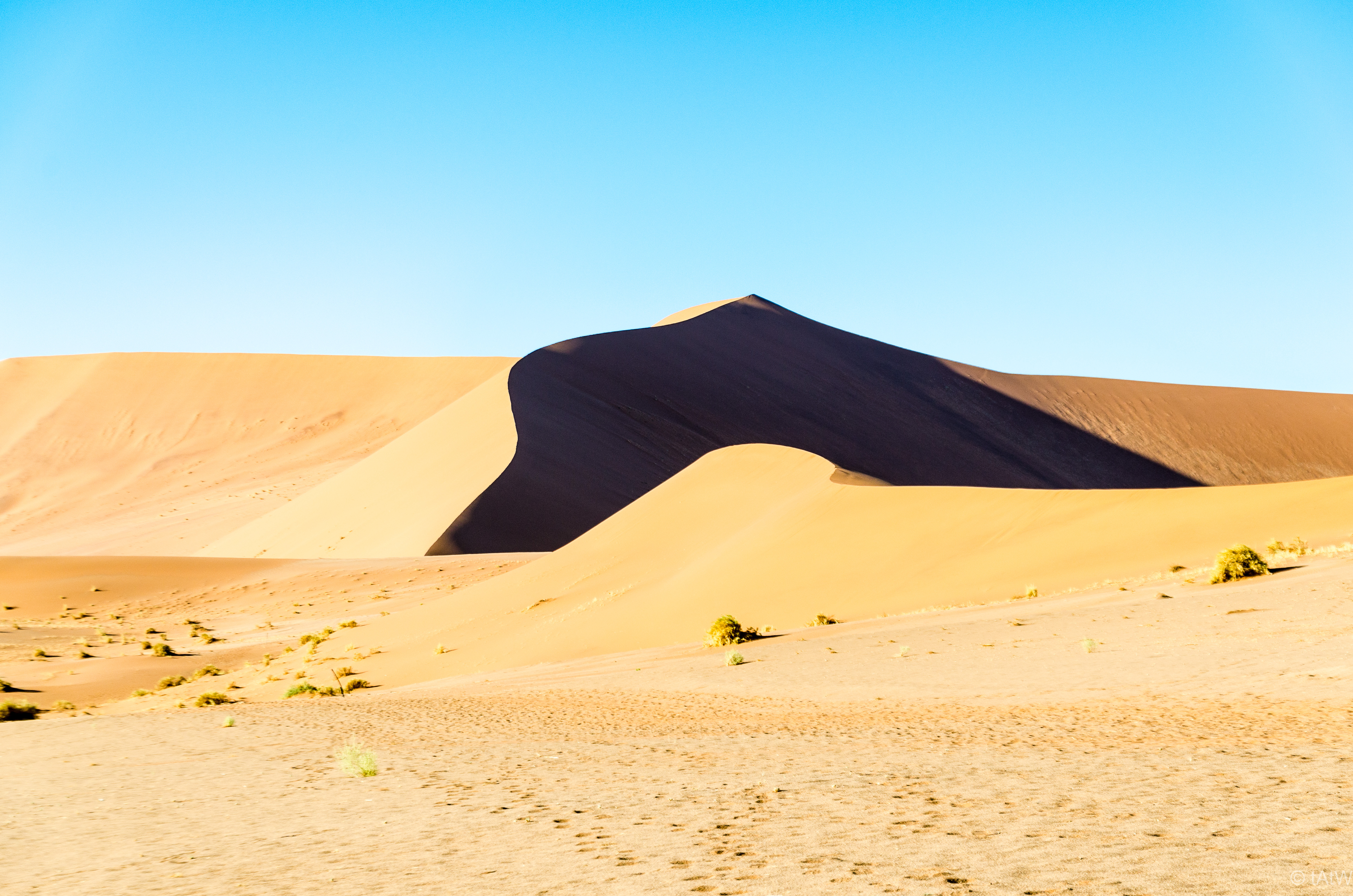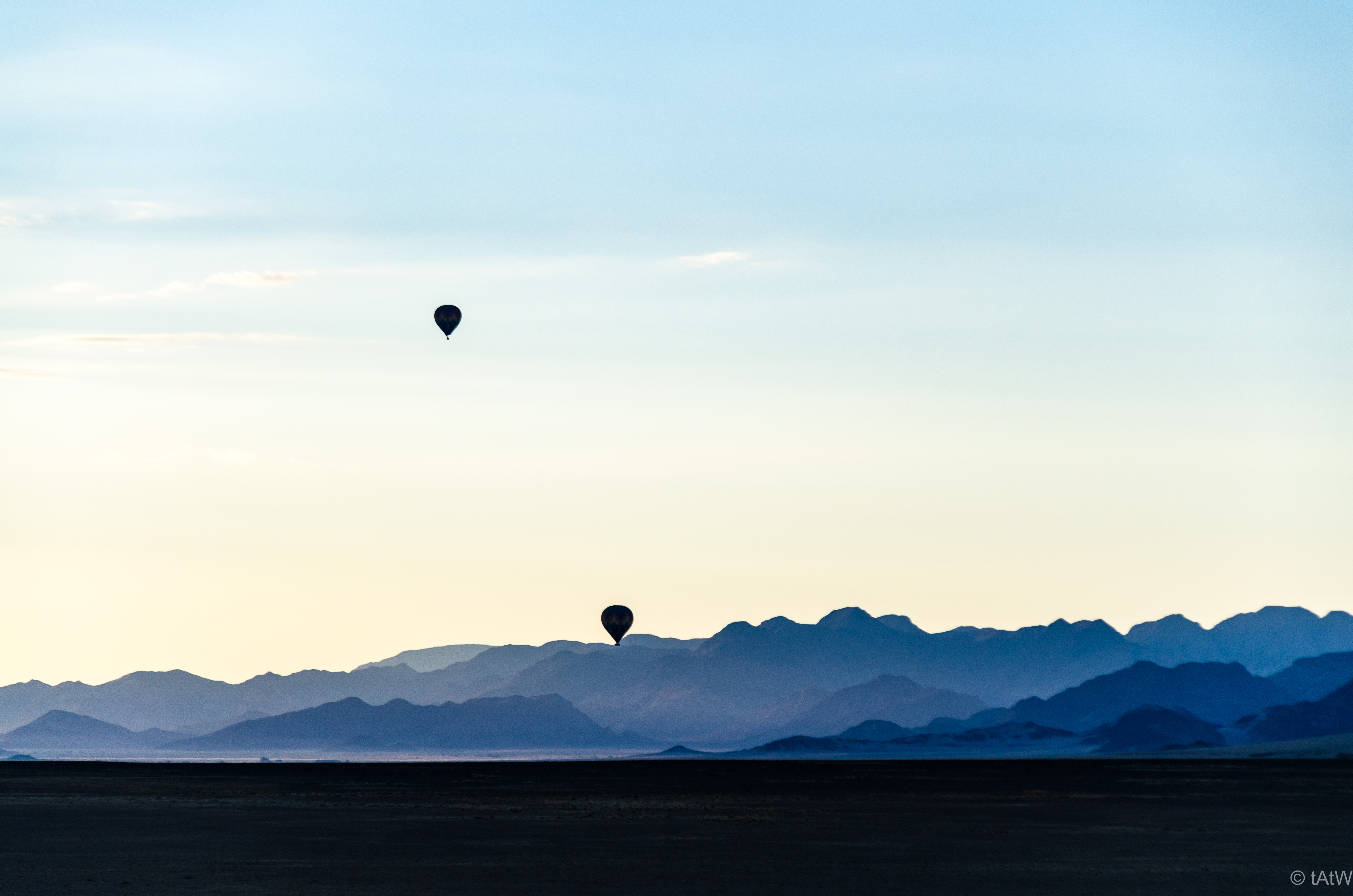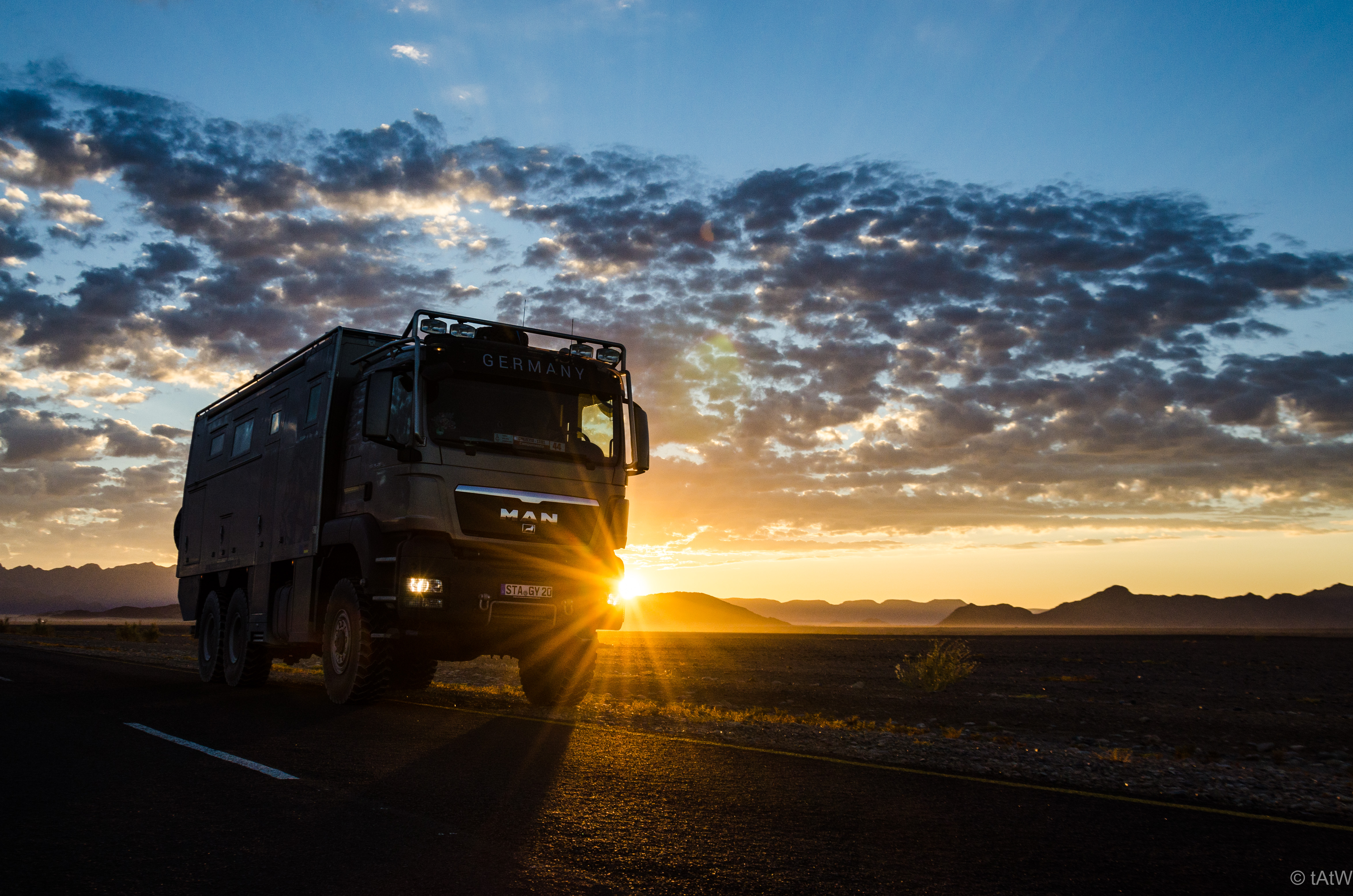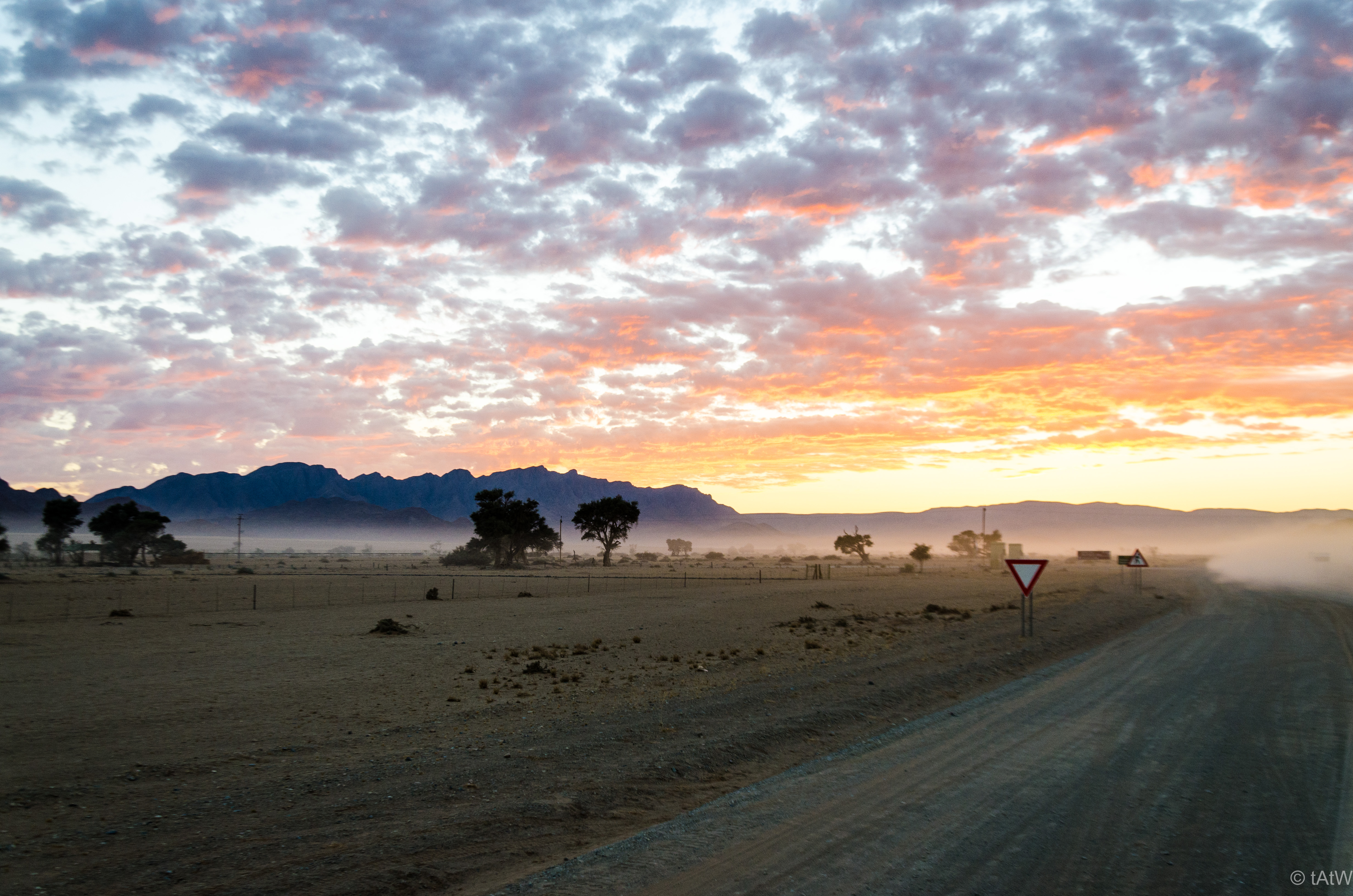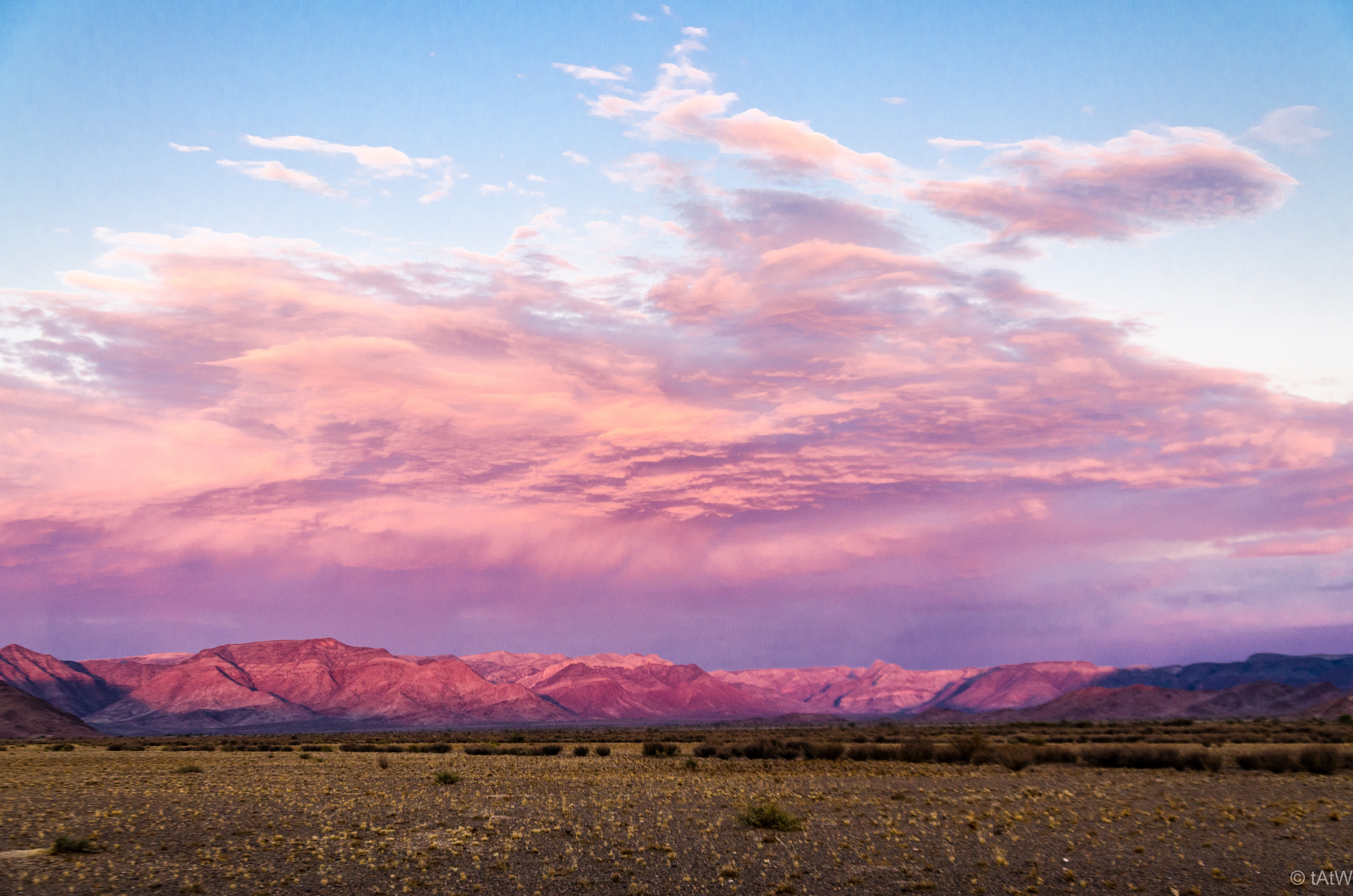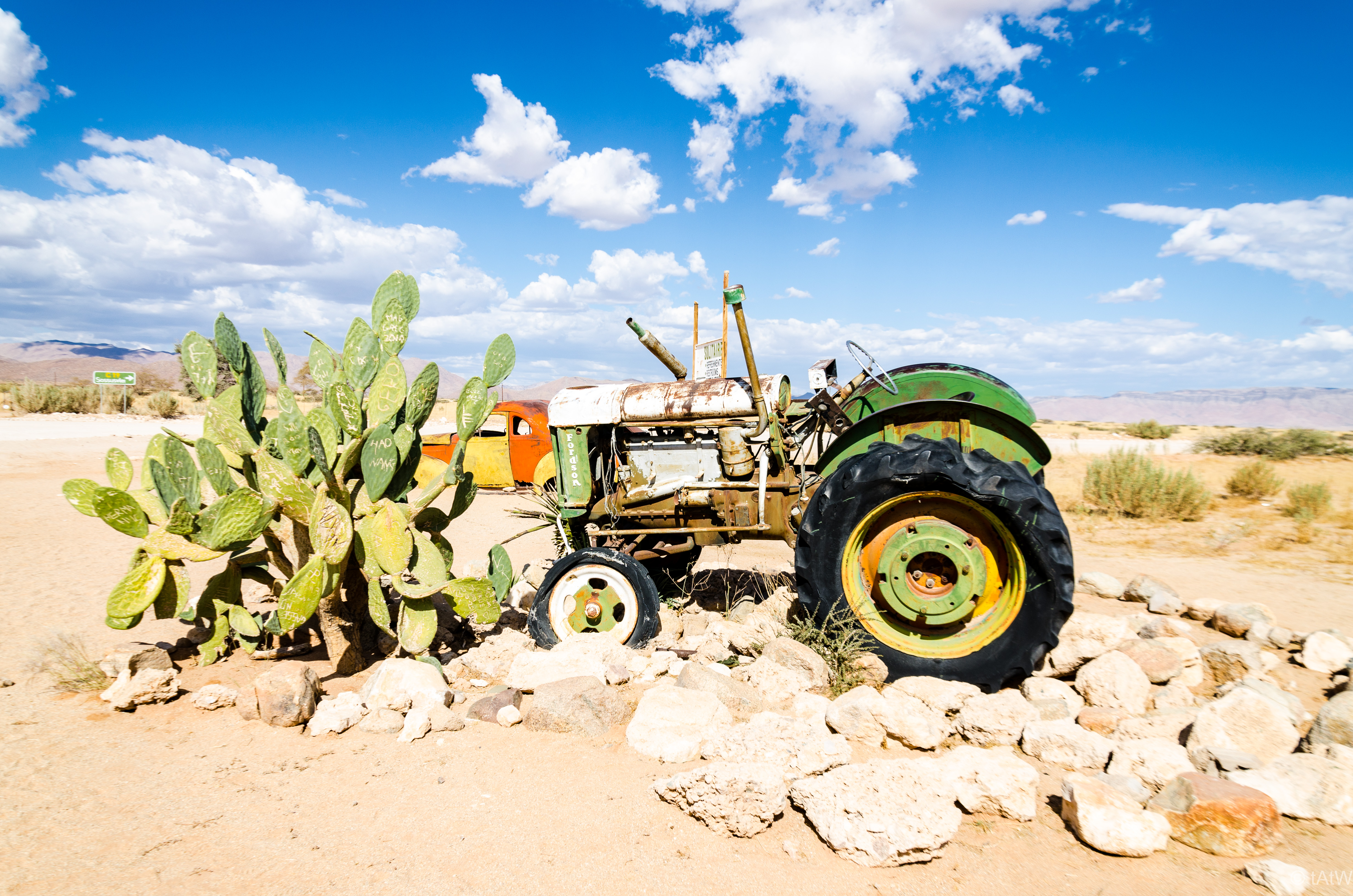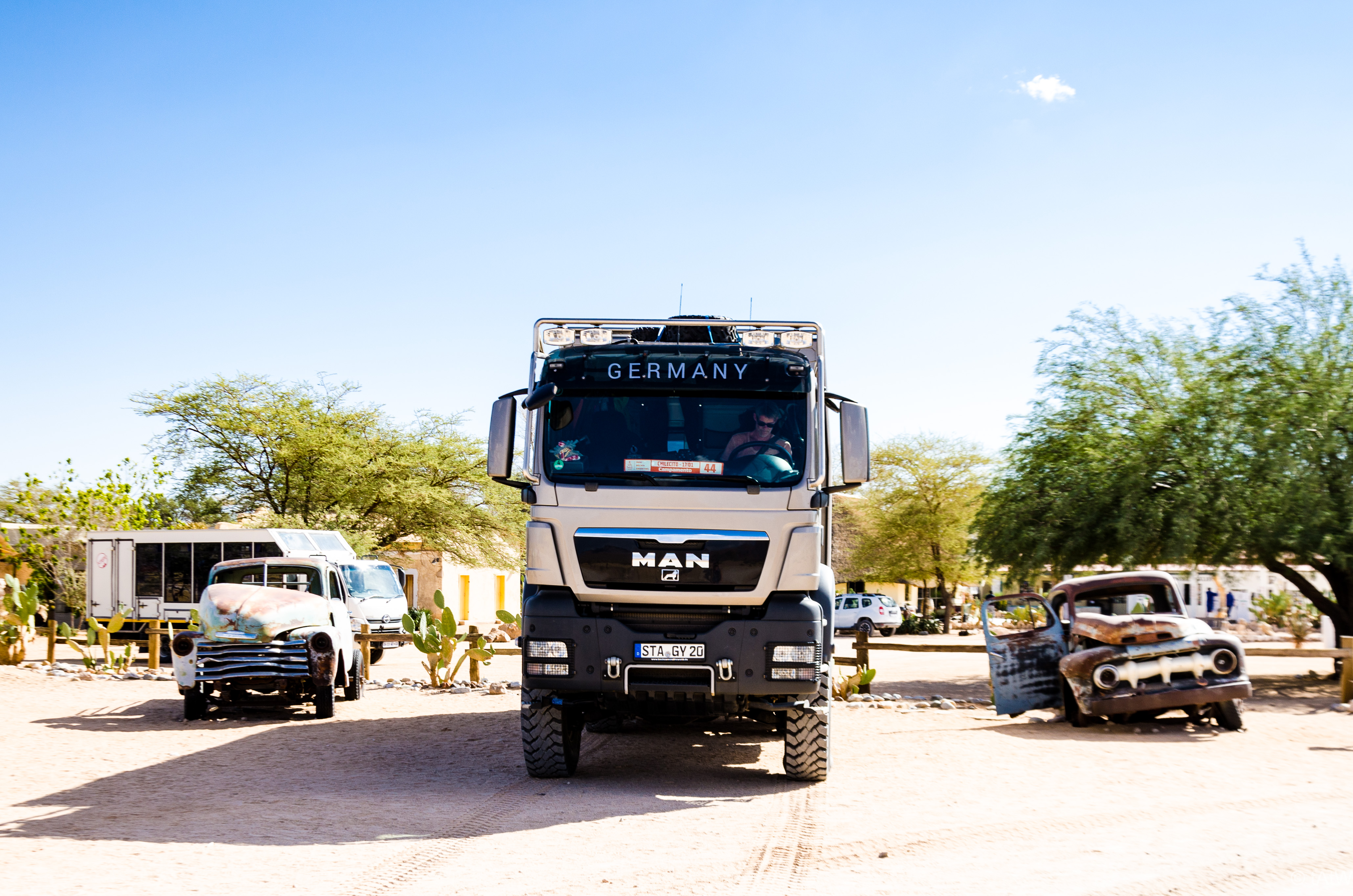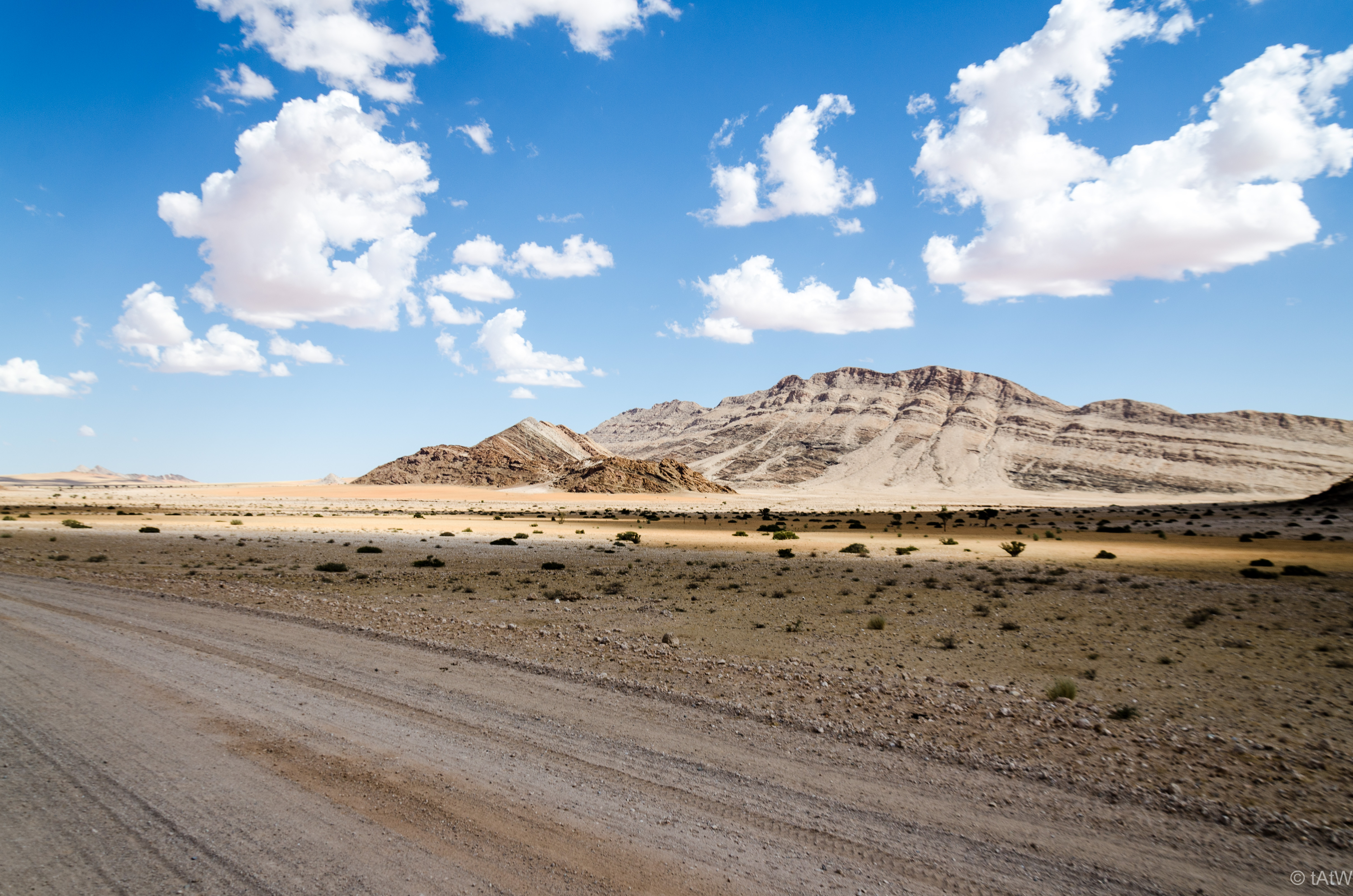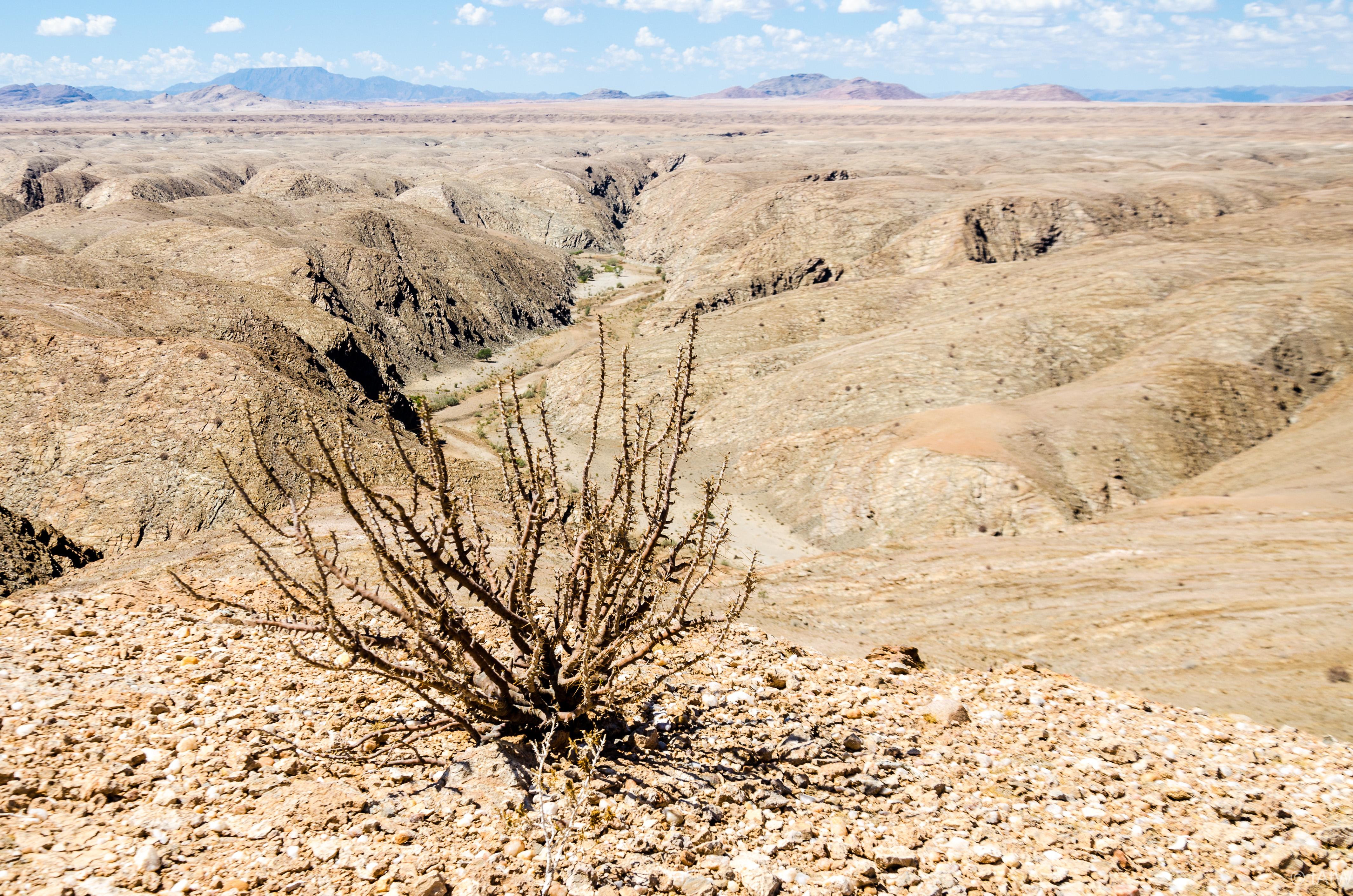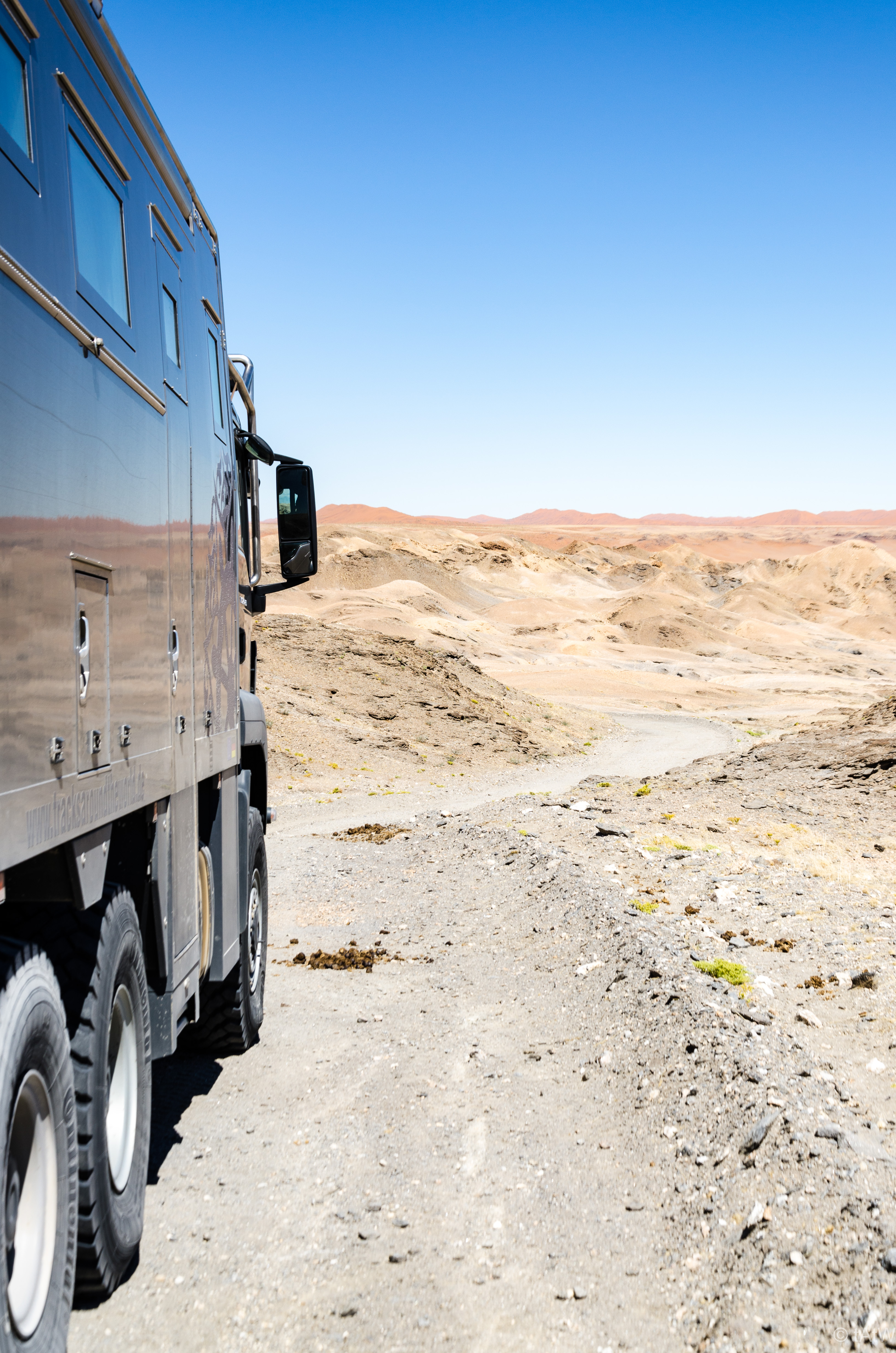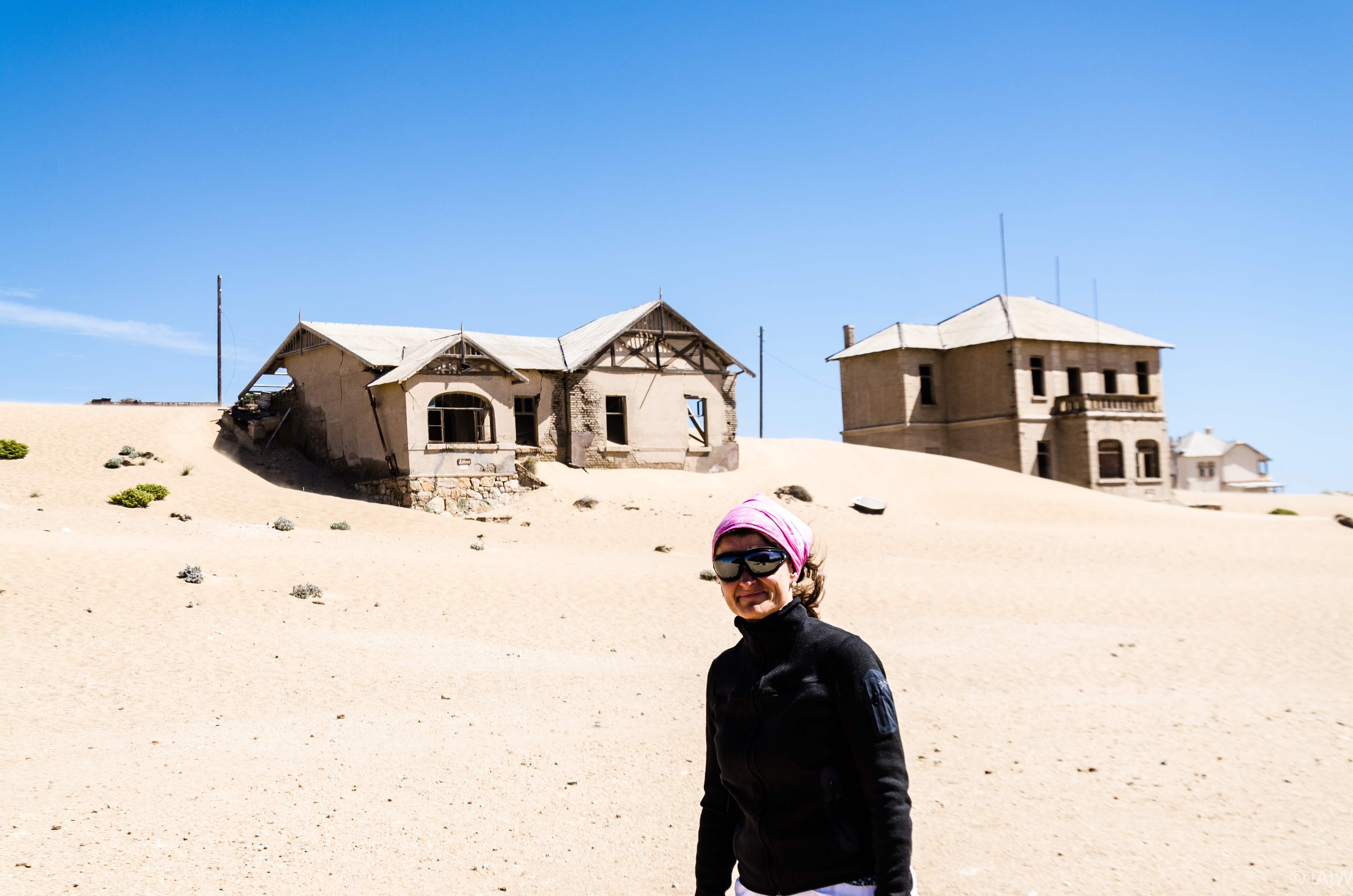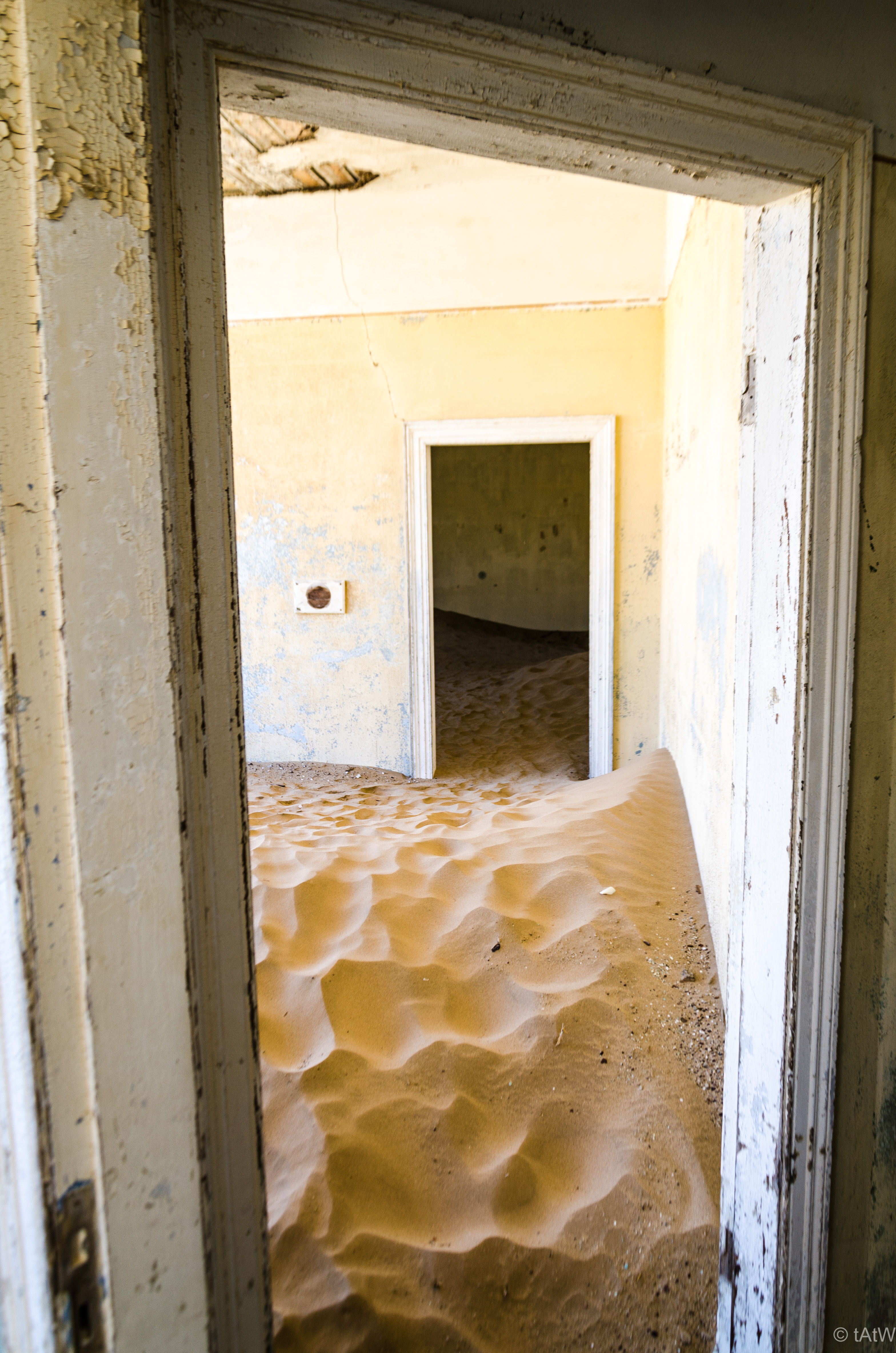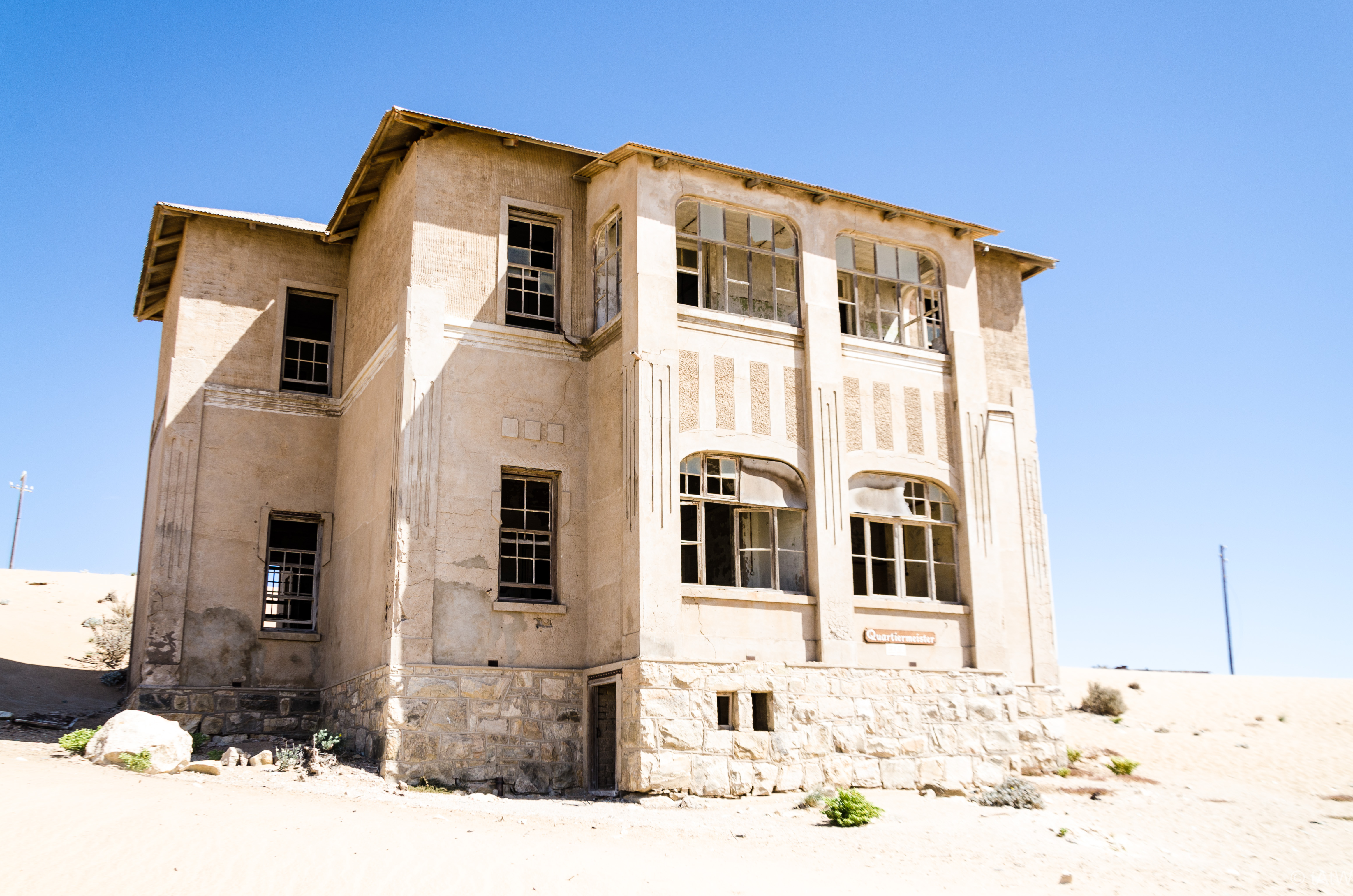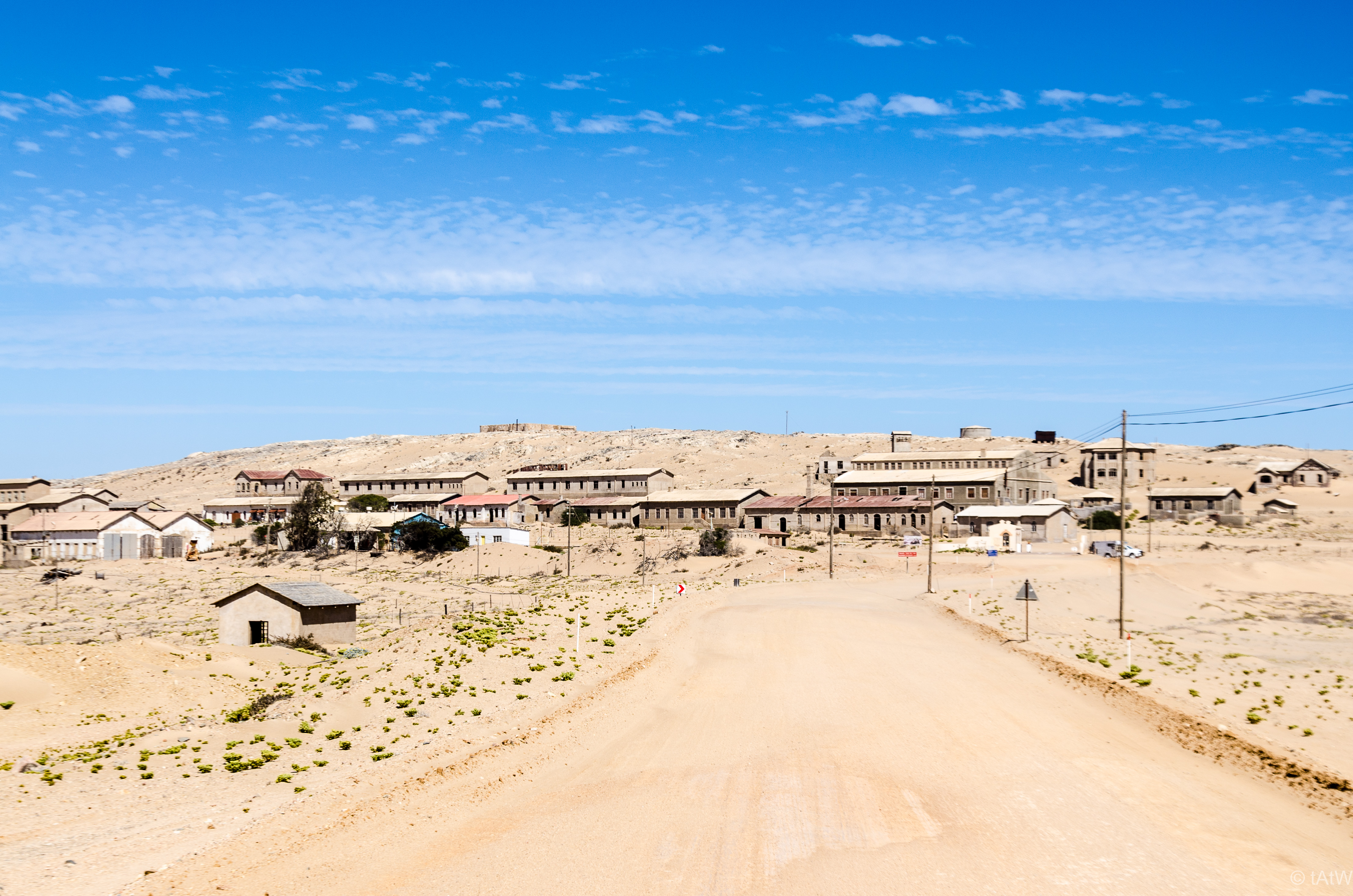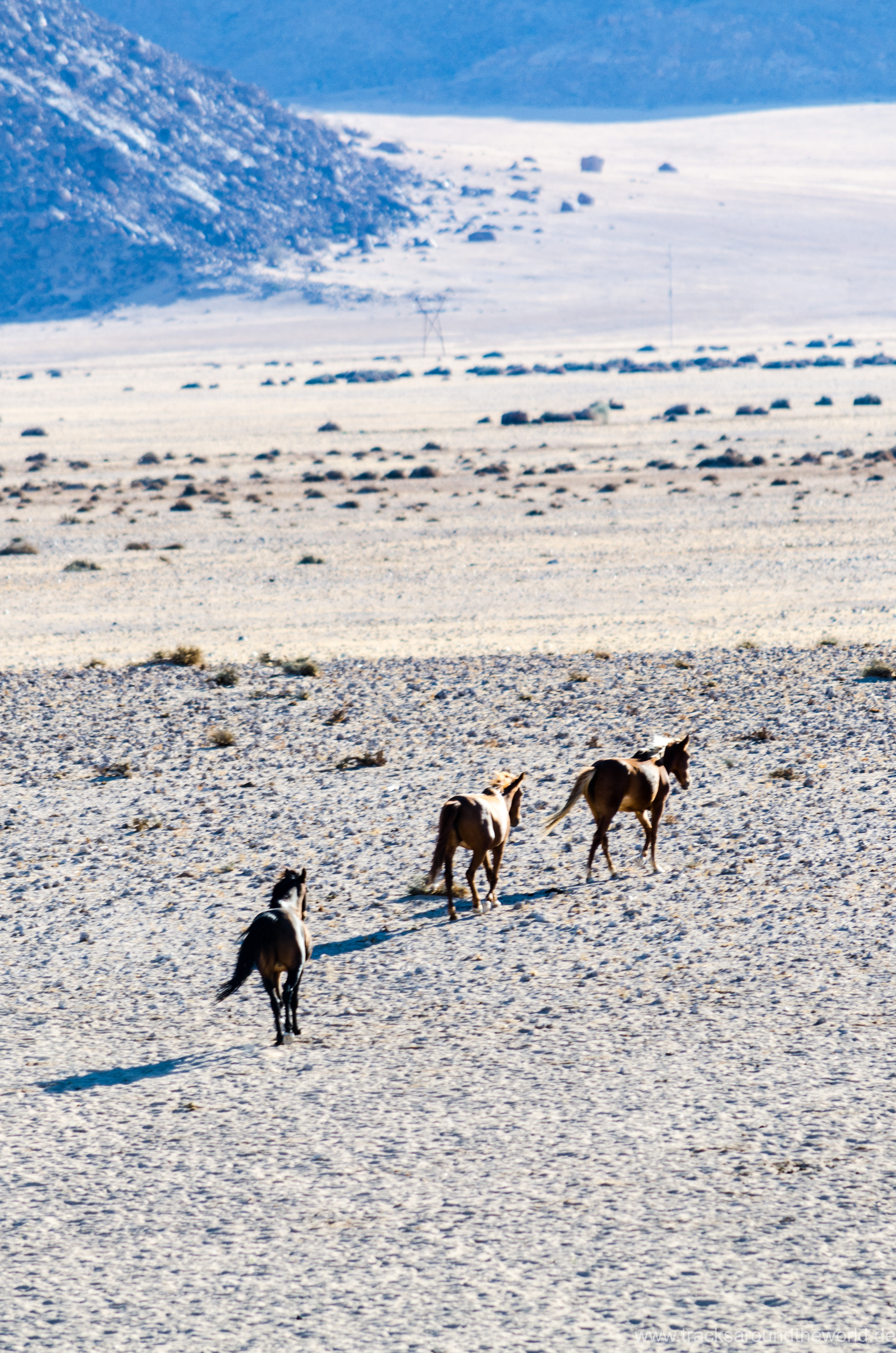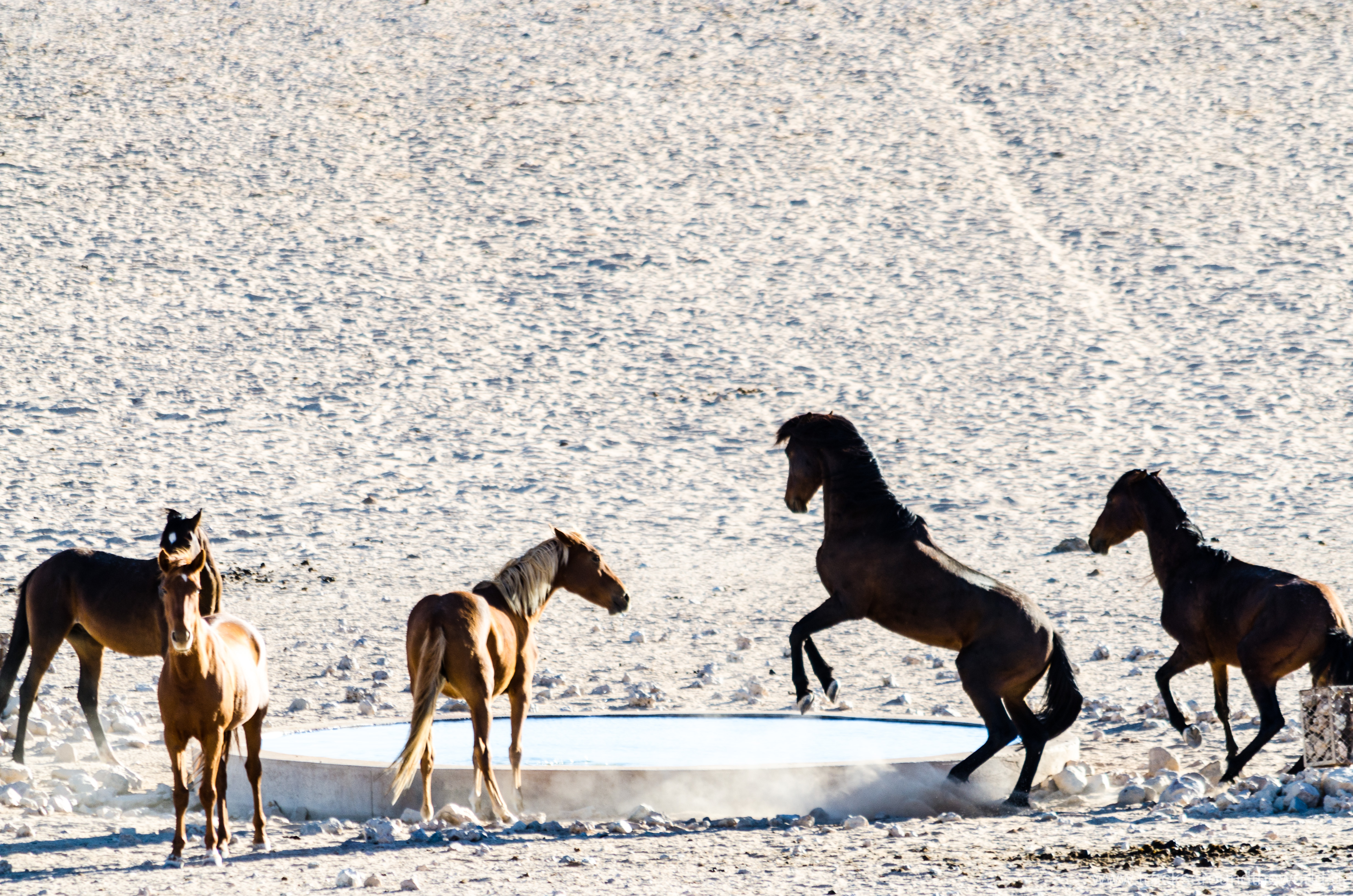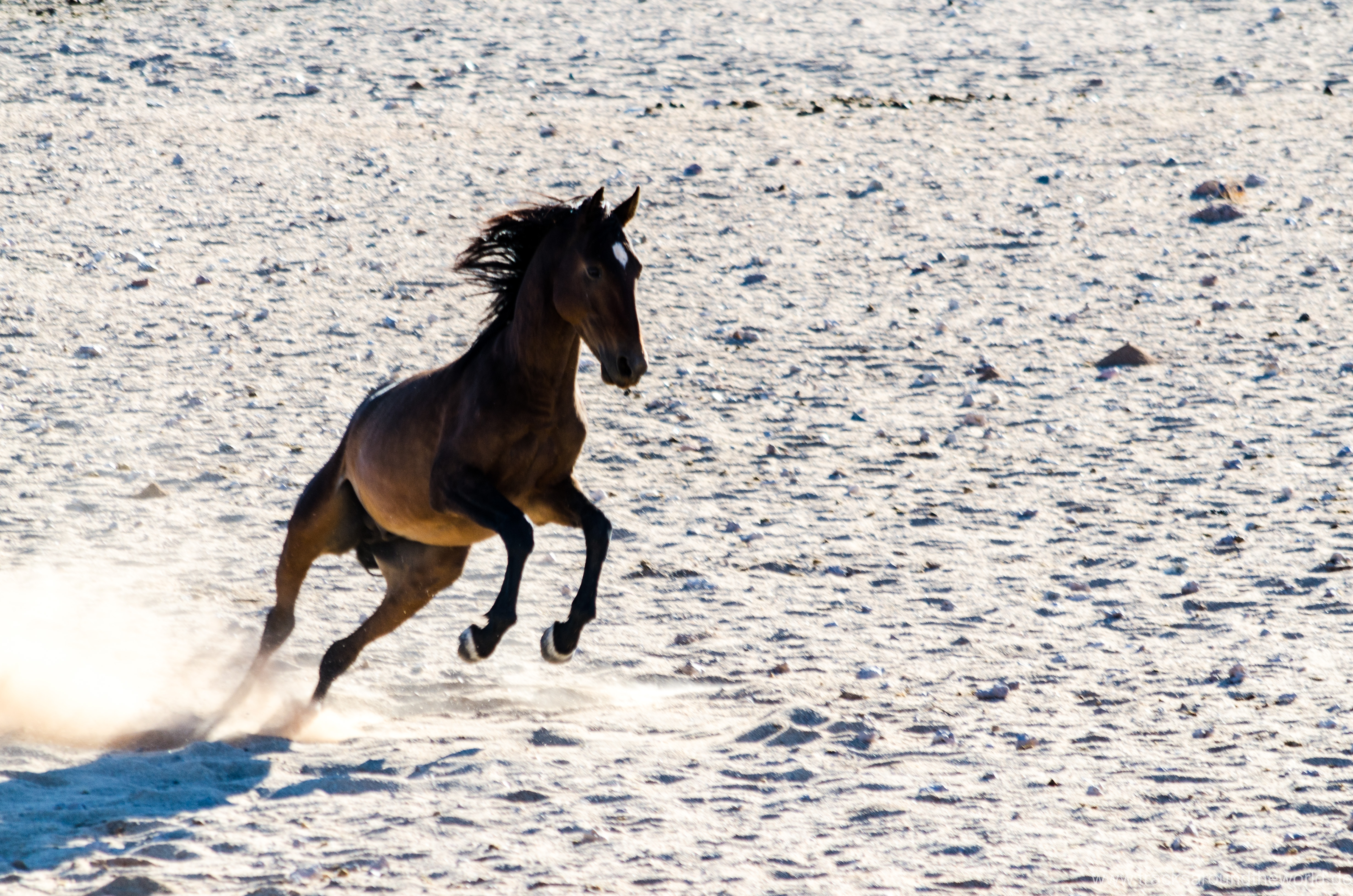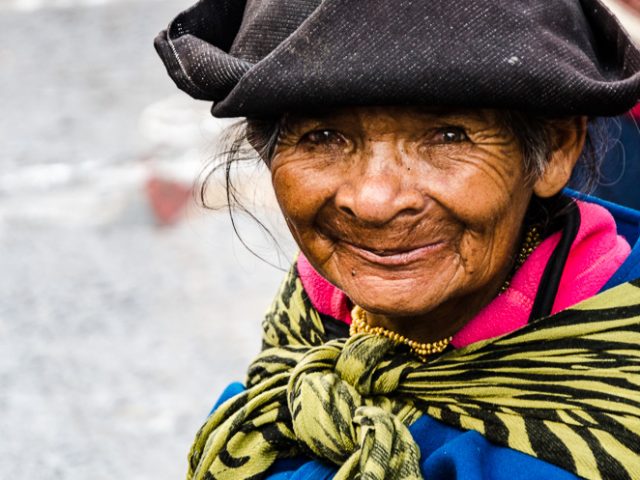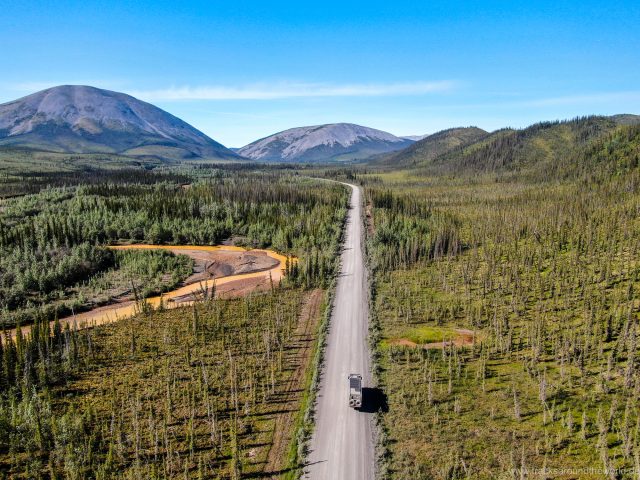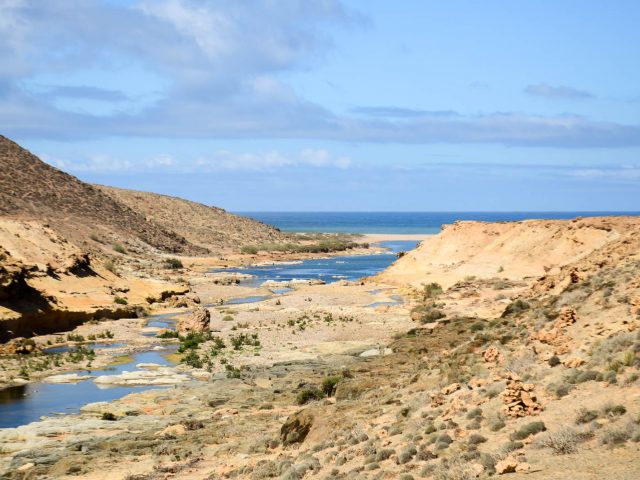As it happened on the first part of our world tour – South America – we again would have almost missed the intercontinental flight from Frankfurt via Cape Town to Walvis Bay. The plane from Mallorca was delayed and we could not check the luggage through to Namibia. While Karin was waiting for the luggage in Frankfurt, I kept entertained the check-in girls to keep the counter open a bit longer …. Finally, it worked out.
We love small airports like Walvis Bay in the Namib desert of Namibia: you walk over half the runway to the terminal, the luggage is delivered by pick-up, everything is very relaxed and easy. With our rental car we drive through the desert to Walvis Bay where we booked for the first two nights a super chic boutique hotel “The Rez”. Since our ship with Shujaa on board – the Grande Cosmo – is a little late, we have an “extra day”, which we spend with admin stuff (purchasing local SIM card and cash) and a trip to Swapkopmund. But at least our vessel – in contrast to our ship with which we have shipped to South America – did not sink on the way to its destination.
The next morning it’s time to pick up Shujaa and we are both very excited. While Karin is waiting in the office of the agent, I drive with the agent to the port, where we drive together with a customs officer to Shujaa. My first inspection result is “no damage” – neither outside nor in the interior. But when I enter the driver’s cab a little later, I notice directly the open fuse box below the dashboard … very unusual. Then I see that both on the driver and on the passenger side, the control panels of the electric windows and mirror adjustment are missing. They were professionally taken out without leaving any damage. A classic “order theft” to get to a needed spare part. The guys in the harbor of Walvis Bay can assure quite credibly with photos that this condition existed already with the arrival of the ship. We suspect that the control panels were stolen either during the stopover in West Africa (Ghana) or during the crossing itself. So be it annoying, but there are worse things in life. So, it is now necessary to get a damage report, send it to our forwarder in Germany and his shipping insurance, contact MAN in Windhoek and order the spare parts – in fact one is available locally and the other one can be shipped in one day from South Africa. Again, as in South America, an excellent service from MAN on site. We are glad that, as always, we have completely cleared the cab prior to the shipping so that nothing else got stolen.
We will arrange a shipment of the spare parts to Swapkopmund, where we will pick them up in about 2 weeks on our return trip to North Namibia, and after purchasing food, water and diesel we head off to the Namib Desert. This time with a special permit, which allows us to cross the desert off the main slopes. Via Homeb at Kuiseb Riviere we drive to the granite rock Mirabib, where we have a wonderful place to stay, with far-sightedness into the infinite, misanthropic Namib desert and a sunset that one finds so only in Africa.
We continue on very good gravel roads (Namibia still has the reputation of having the best-maintained tracks in the world) to Kuiseb Canyon; then via Solitaire (in this remote roadhouse in the middle of the desert, there is indeed the best apple strudel in Africa) to Soussuvlei, where we stay about 20 km from the park entrance on a small path for the night in the total remoteness and silence of the desert. Although we are not among the first visitors at sunrise at the gate the next morning, there is surprisingly little traffic compared to our last Namibia trip of over 6 years ago; at that time also the idea of our world trip with an expedition mobile was born (quite fast execution😉). First we walk in the coolness of the morning to the little-visited Hidden Vlei and enjoy the change of colors and the absolute silence and vastness of the landscape – with nobody else being around. Afterwards we do a long brunch at Shujaa and then have a siesta in our deckchairs during the hot lunchtime – it’s handy if you have everything with you.
In the afternoon we take the 4×4 run into Dead-Vlei: unfortunately, not with Shujaa, although he was looking forward to the first deep sand drive in Africa😉: trucks are not allowed to drive there, and we do not want to pay 50,000 Namibian dollars as a fine. The jeep shuttle driver tells us that he can still drive us out, but then he has done his job for the day and we have to walk back the 4 km. With the exception of a family from Alsace, we do not meet anybody in the Dead-Vlei. Thankfully the family takes us back to Shujaa in their jeep…. the 4 km hike in the low sand back to Shujaa was nothing what we really needed. I use the saved energy to sprint up to the “Dune 45” just before sunset and to admire the dreamlike play of colors of the low sun and the hard dune shadows – Karin prefers to watch it all from Shujaa. Since we do not fancy the overpriced and uninviting campsites at the park entrance, we just park near the entrance to the edge of the unpaved runway for our overnight stay.
From here we continue to the south: we visit the completely bizarre Duwiseb Castle: In 1908 the German Hansheinrich von Wolf built a castle out of natural stones with knight’s hall etc. in the middle of the desert for himself and his wife: the complete furniture was shipped from Germany to Lüderitz and from there brought with oxcart into the desert. He was also eager to buy in as much land as possible.
Afterwards we continue to the picturesque Tiras mountains – the track runs right between the mountain ridge of the highlands and the Namib dunes. After crossing the deserted area, we find at the end of a small gorge the Namtib Lodge: the formerly German couple Theile has been running the farm for the past 37 years, today the children have taken over the biosphere reserve and maintain the farm ecologically. Adapting to the respective water supplies they try to keep a balance between the number of cattle, game and sheep. In water-rich years more cattle are kept, in low-water the game (Springbok, Oryx) is preferred – and if nothing works, the sheep are increased. There will be no overgrazing. The last significant rainfall was in 2012!
Our pitch on the wild-camping is a dream: in front of us the plain with the Namib dunes, behind us the brown / black granite stones of the Tiras mountains and next to us a shady camel thorn tree. Pure Africa! We are already there at noon and can thus enjoy this dream place extensively. In the late afternoon we make a small hike over part of the 16 hectar farm area – although armed with binoculars and telephoto lenses, we see no animals. Then we have our first self-mixed gin and tonic in Africa, and then another. The sunset and the atmosphere is like you can only find in Africa. The grilled steaks are excellent. Another dream day!
In the warm morning light, we continue – in front of us the deep red dunes of the Namib which create a harmonious and peaceful atmosphere. Kolmanskop, the ghost town from the diamond era of the penultimate century, gradually recaptured by sand and nature, is a stark contrast: a grotesque mood, which is reinforced by the numerous German names and the extreme sandstorm that prevailed during our visit. Also Lüderitz, next to Walvis Bay the only deep-sea port of Namibia, looks like extinct and from another time – here, the clocks have indeed stopped. Our overnight place is in the middle of the desert where we see the rare wild Namib horses, only between 100 and 300 exist.


